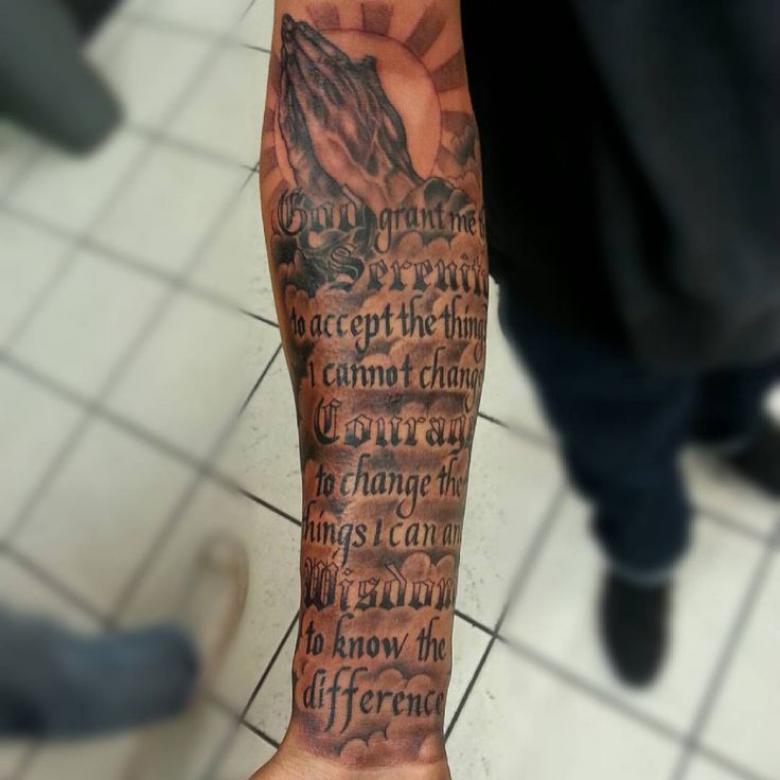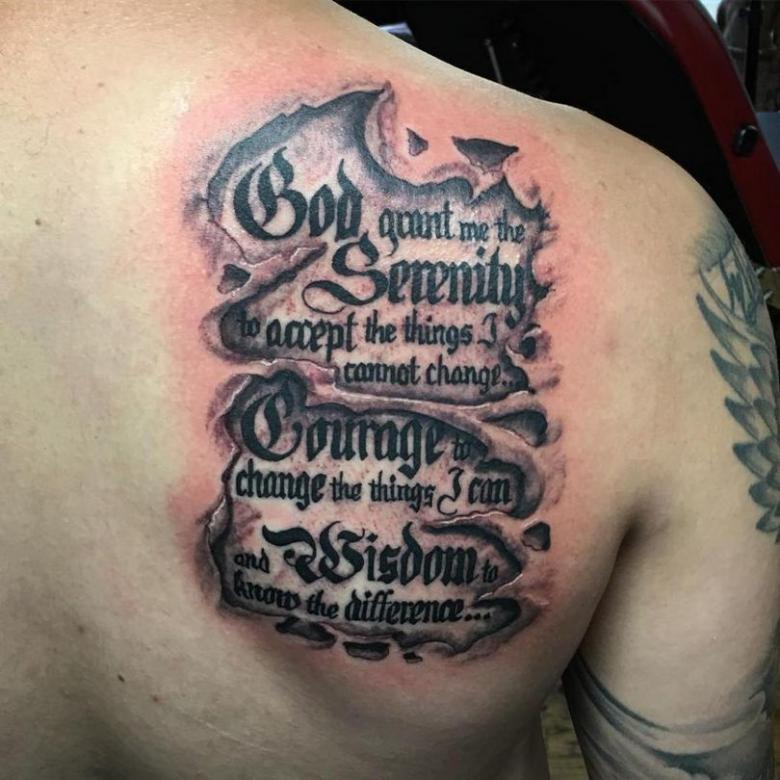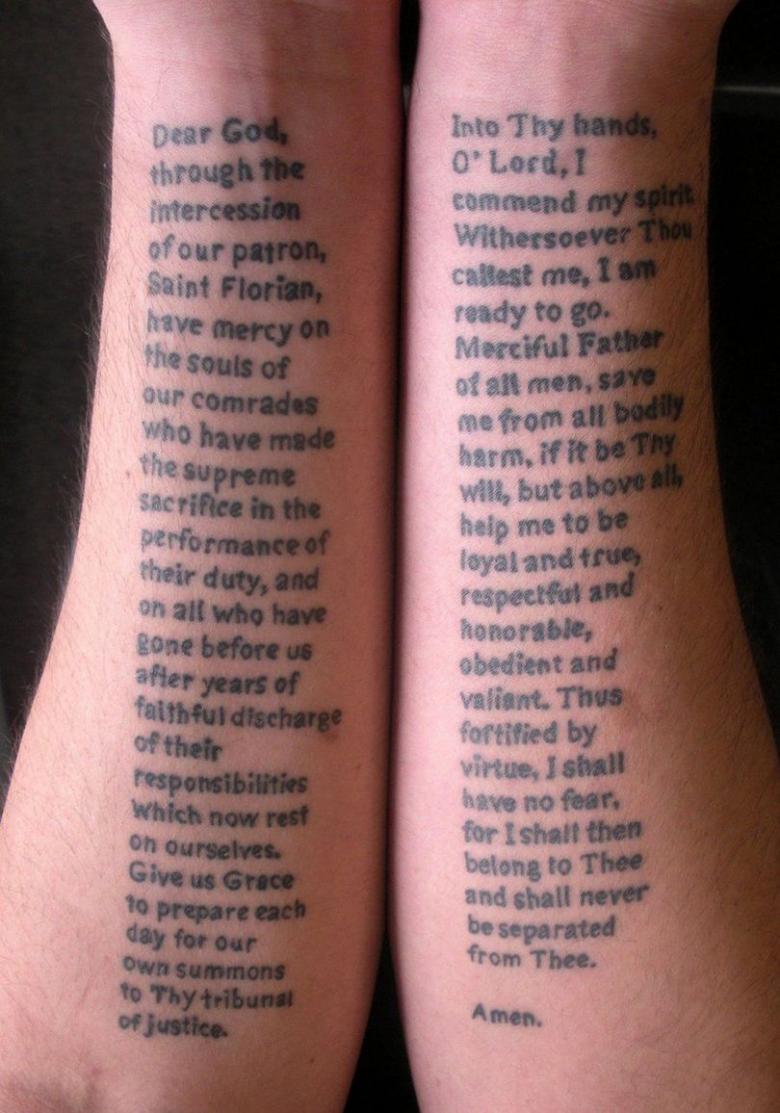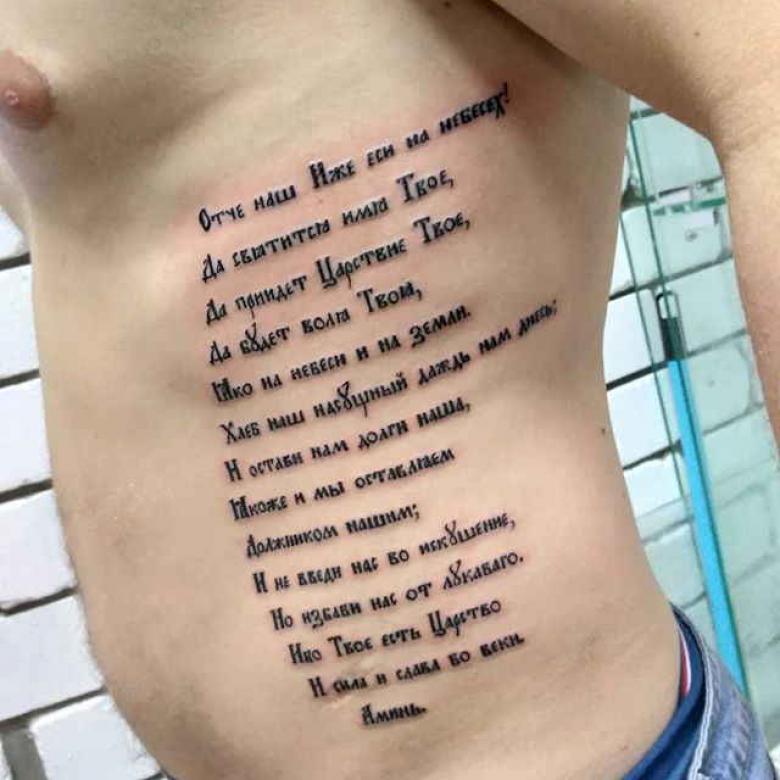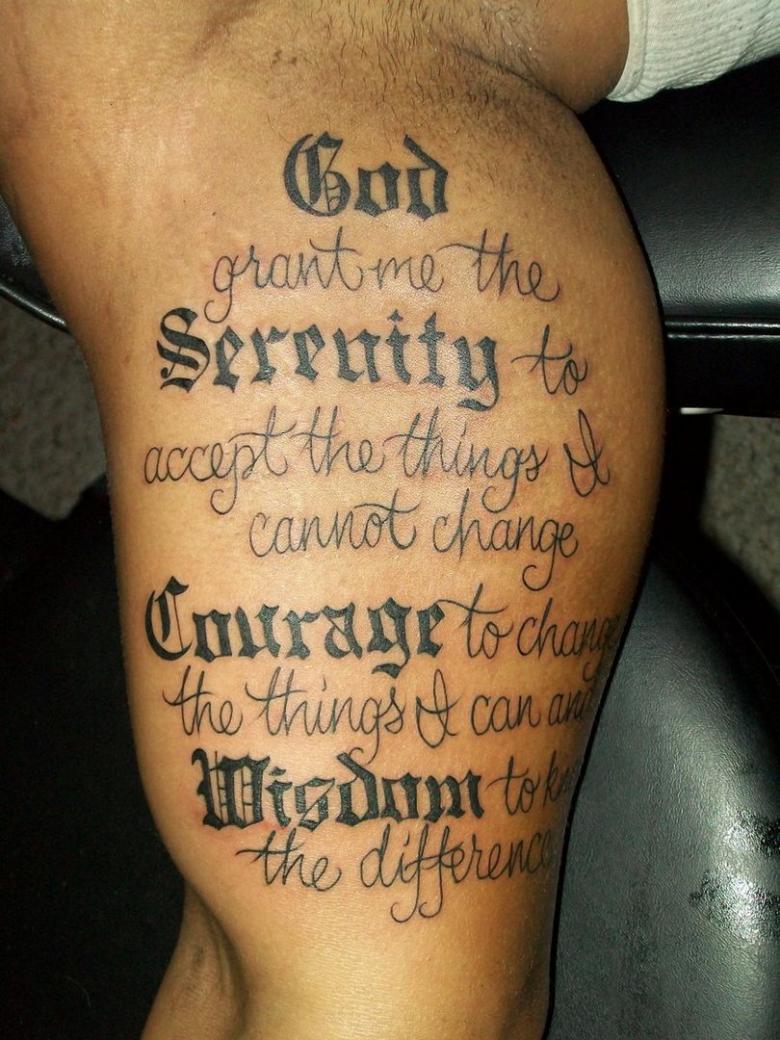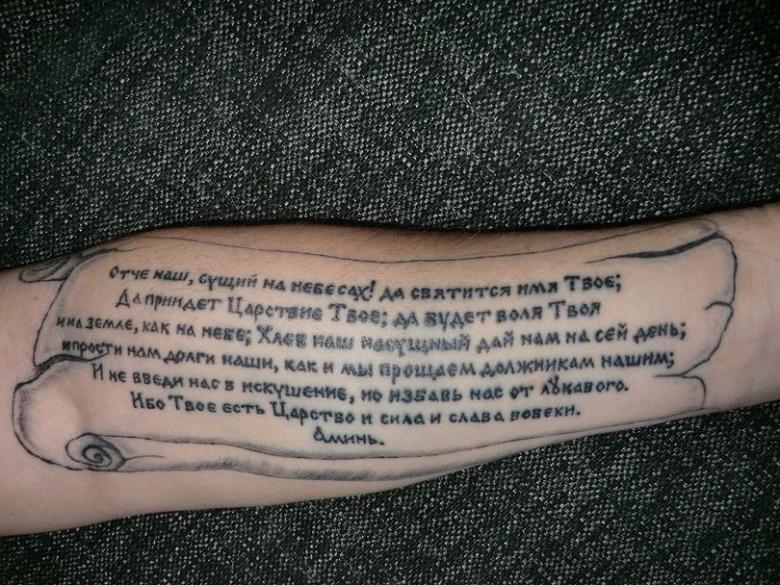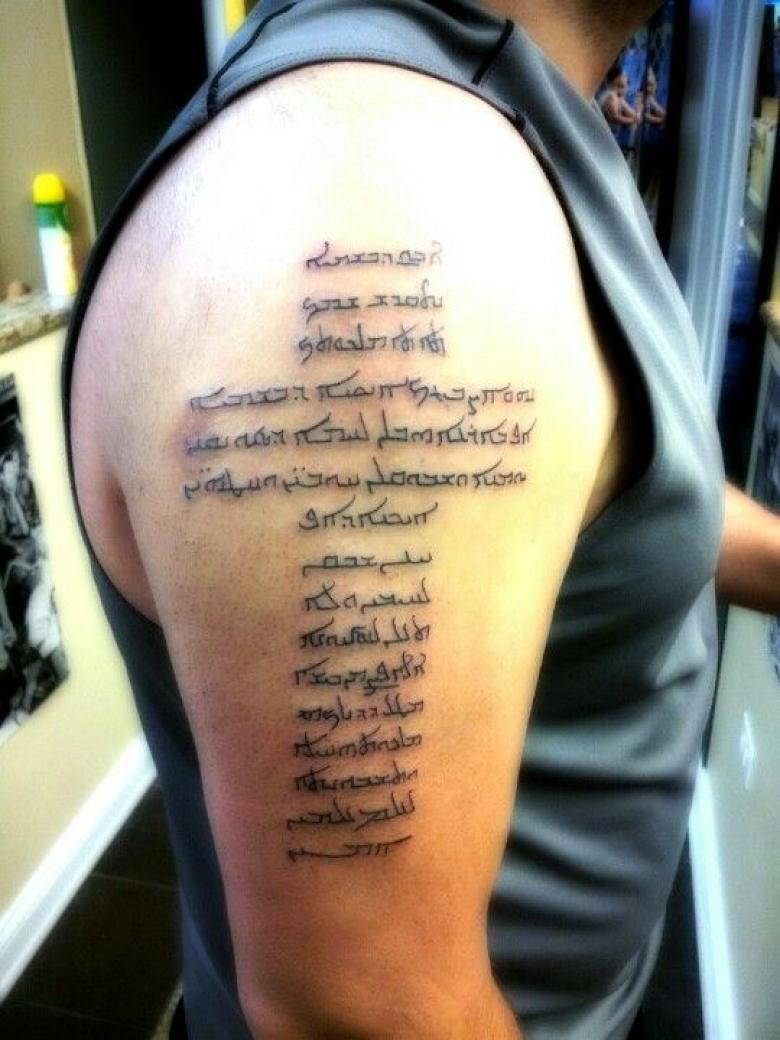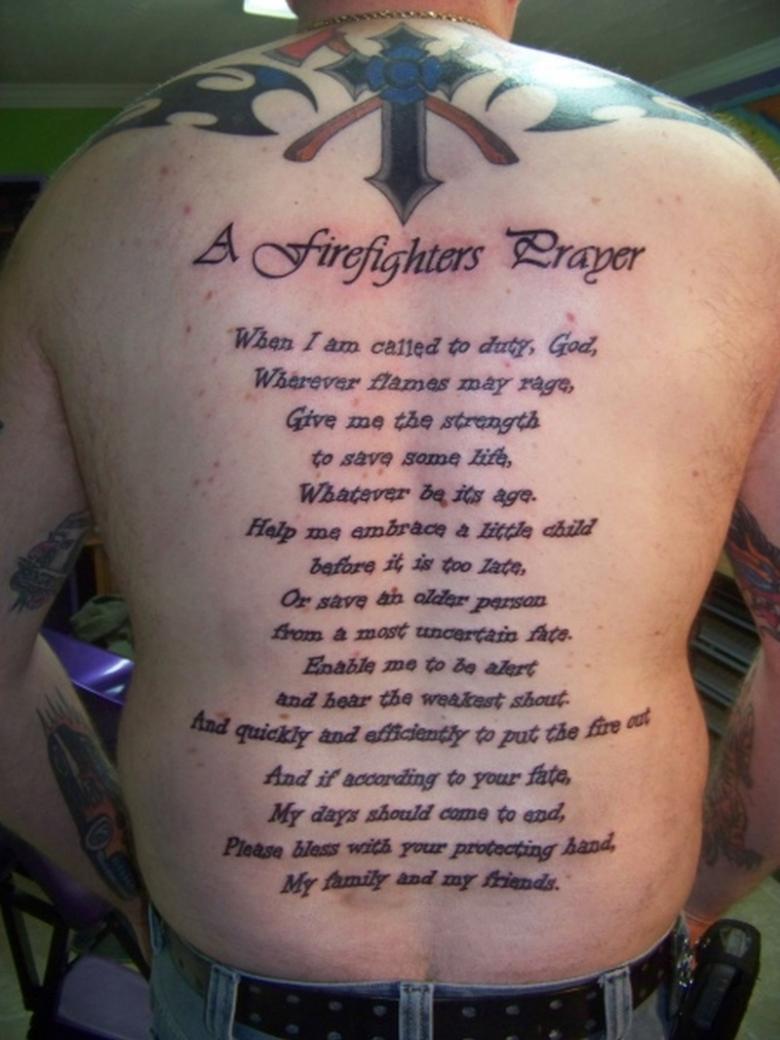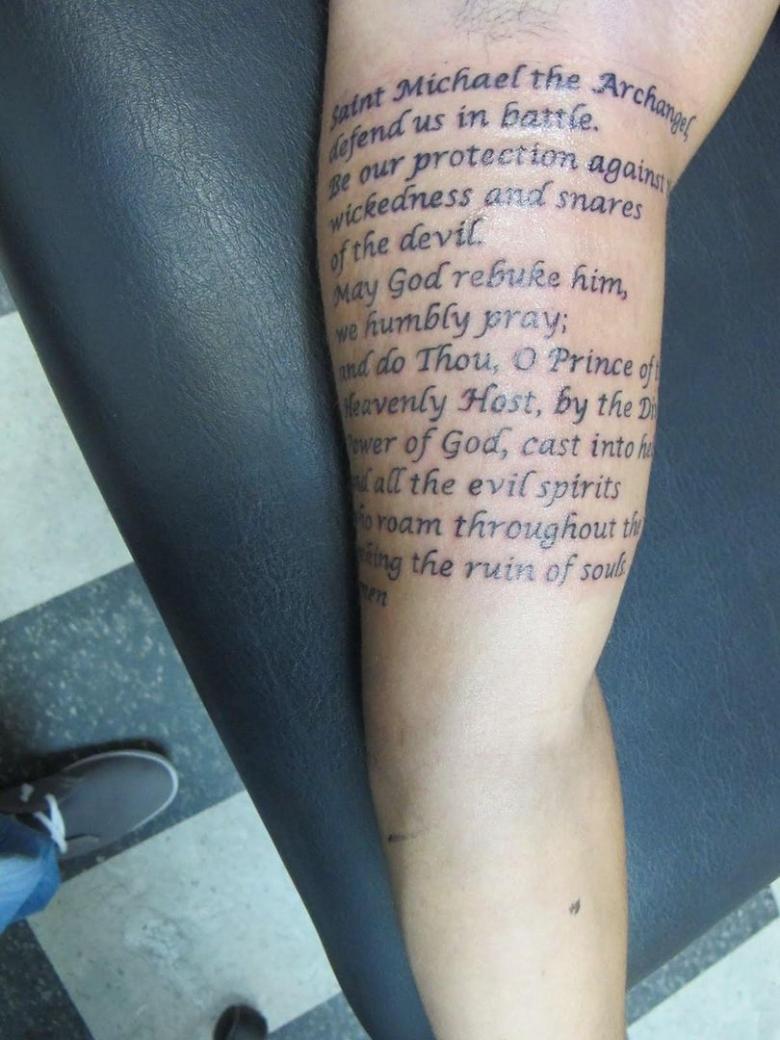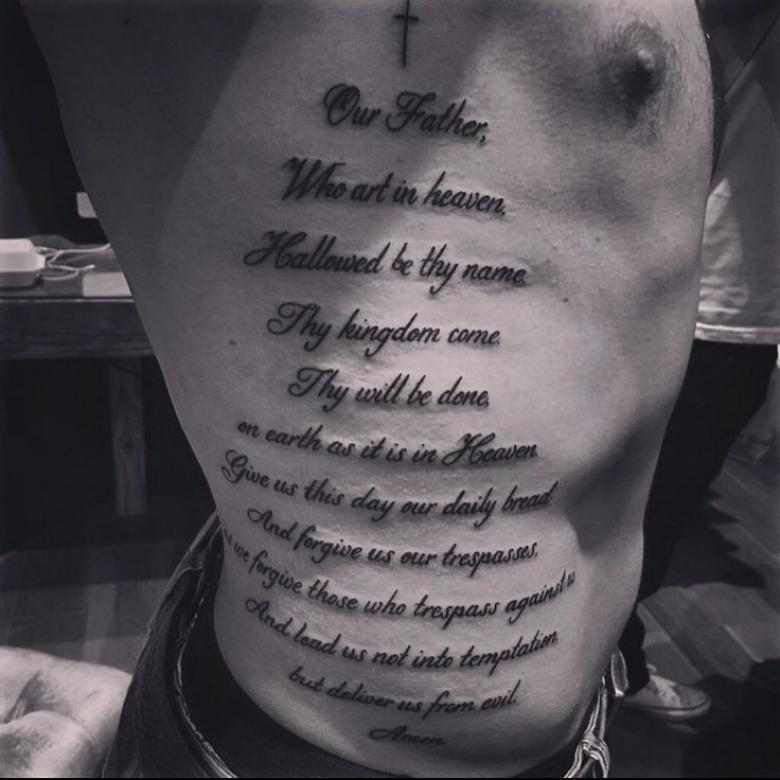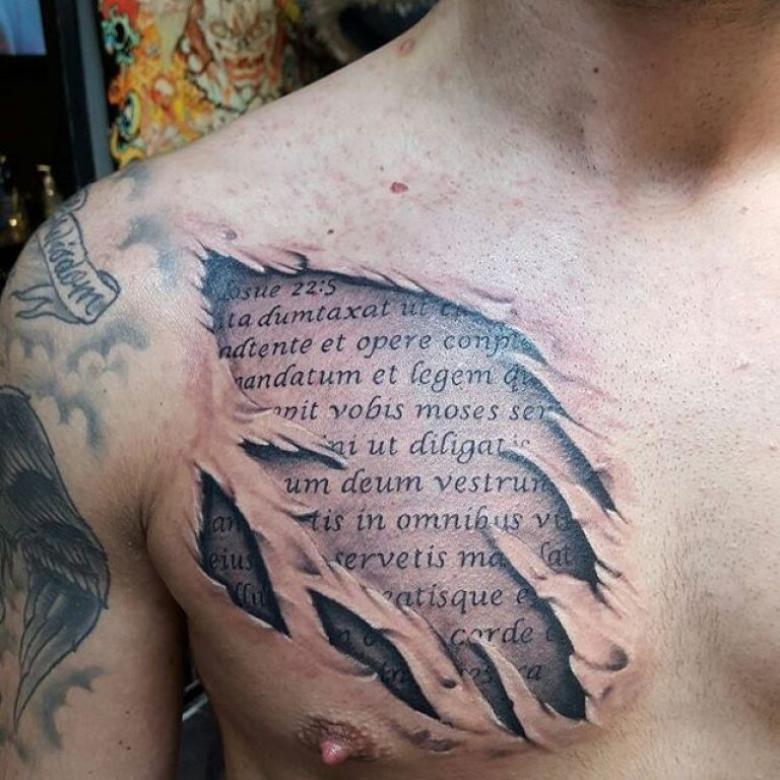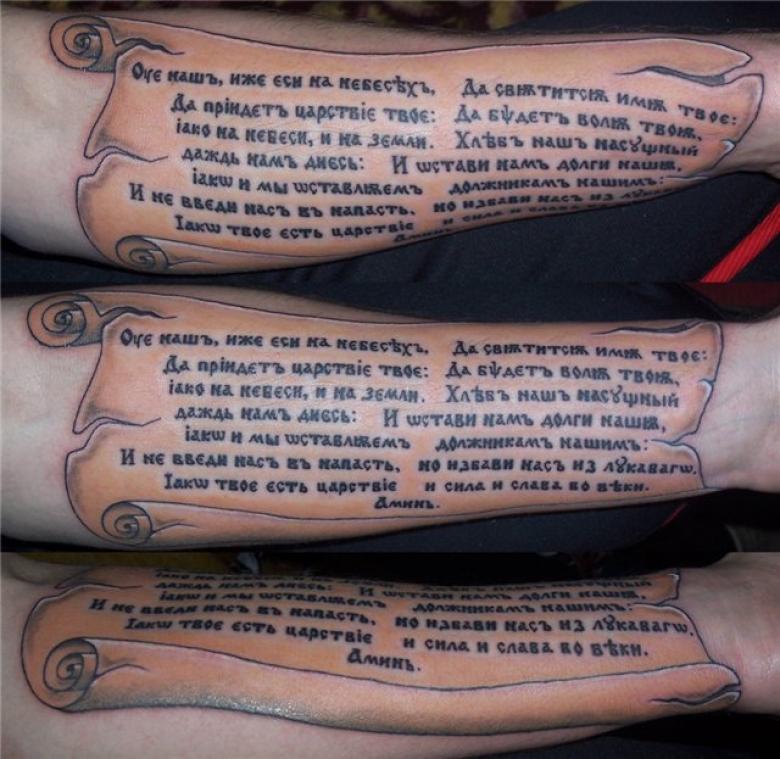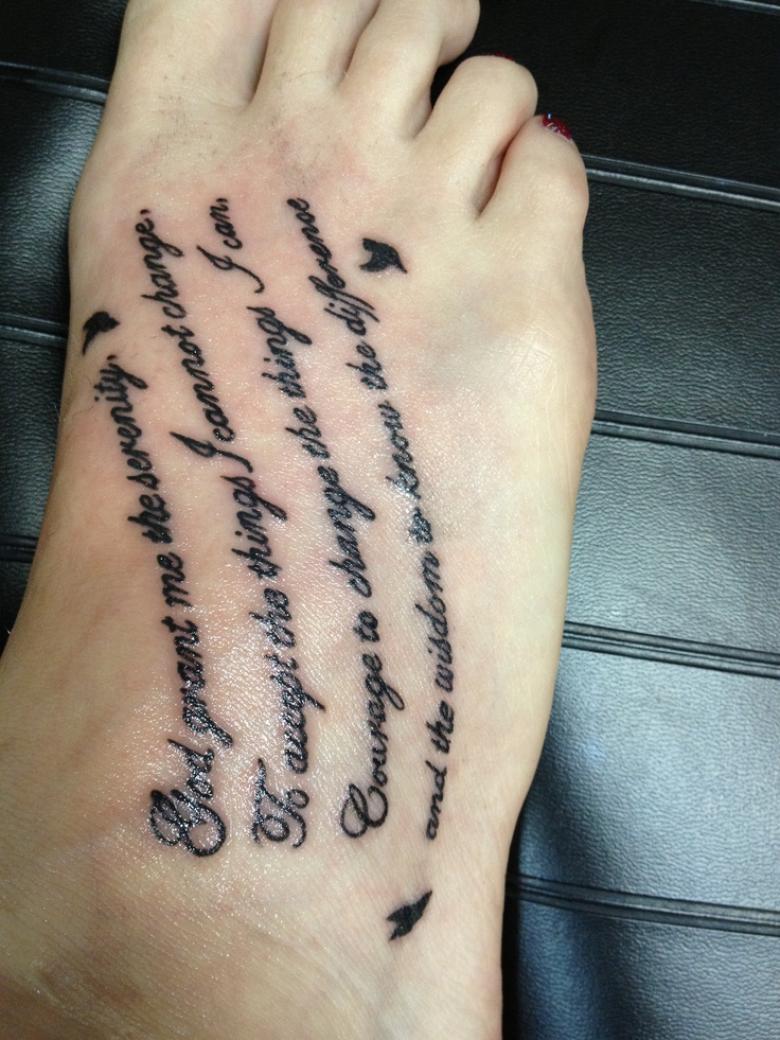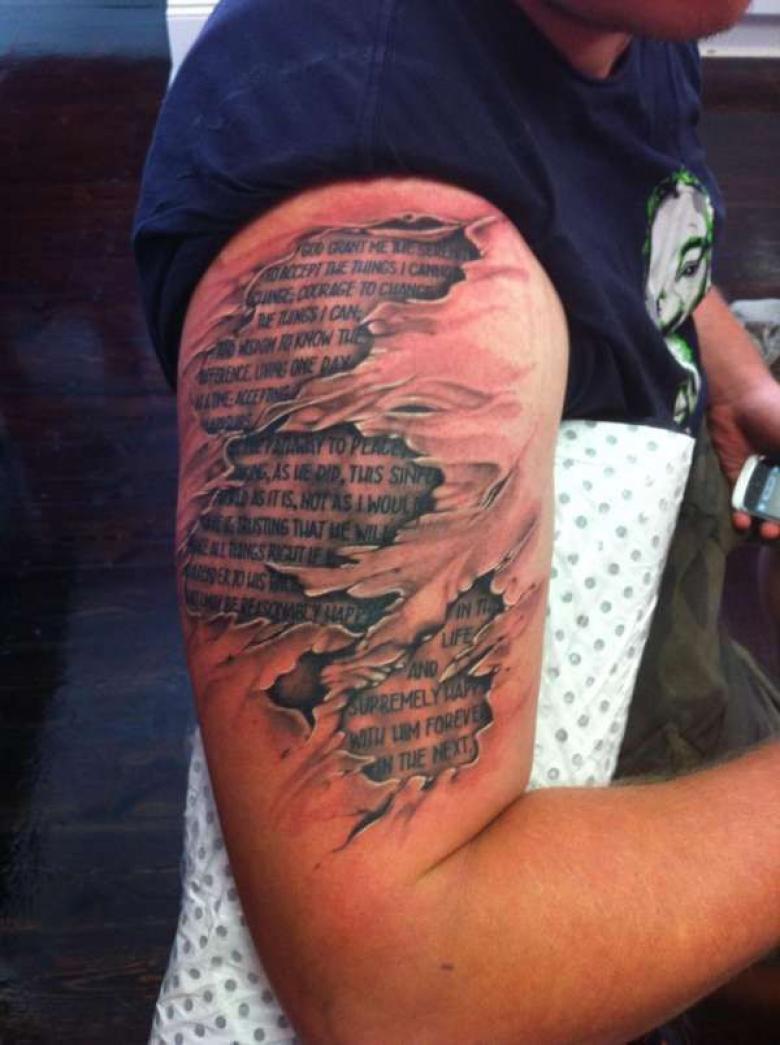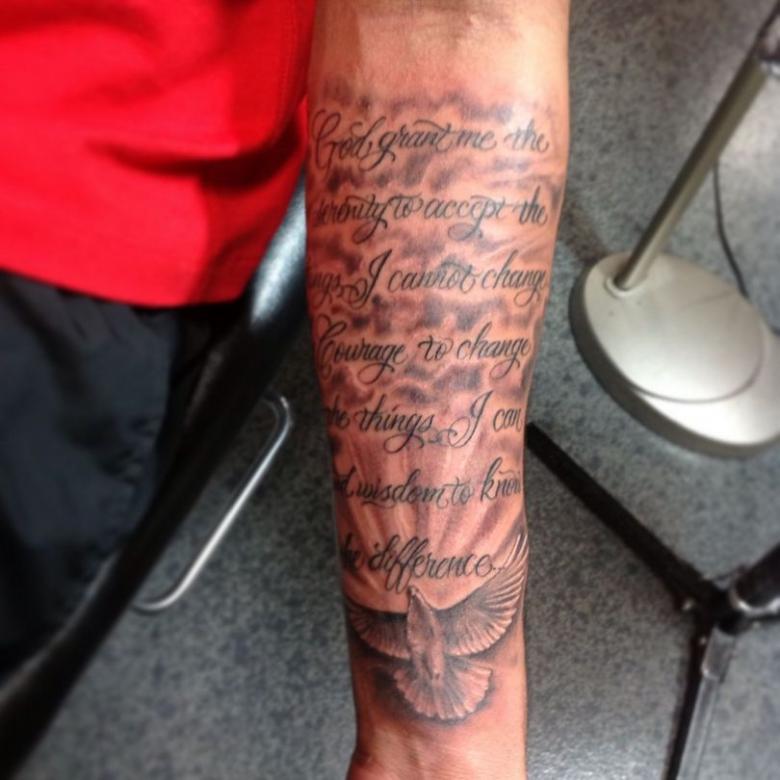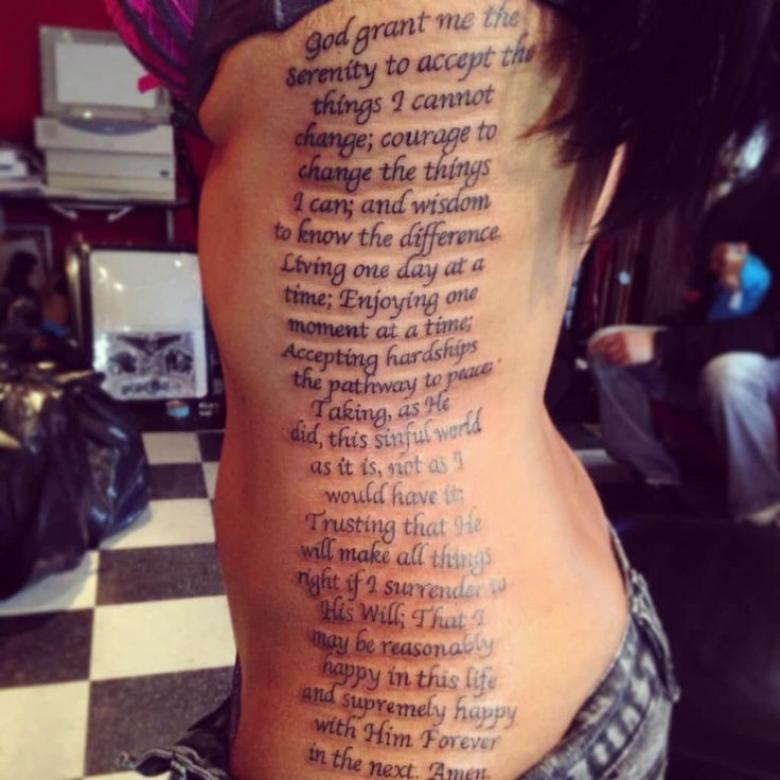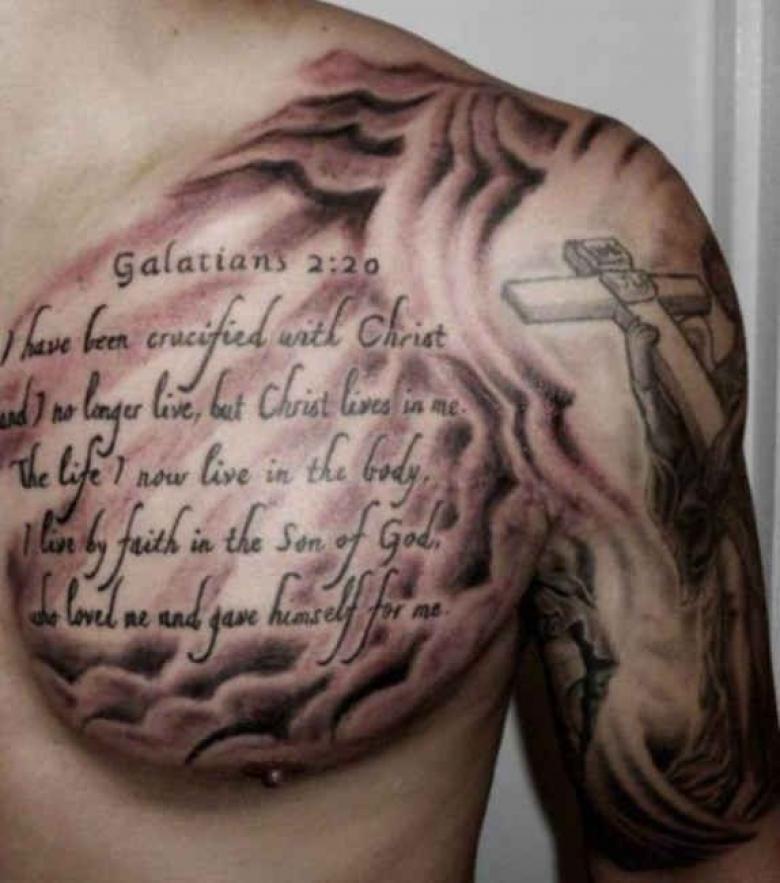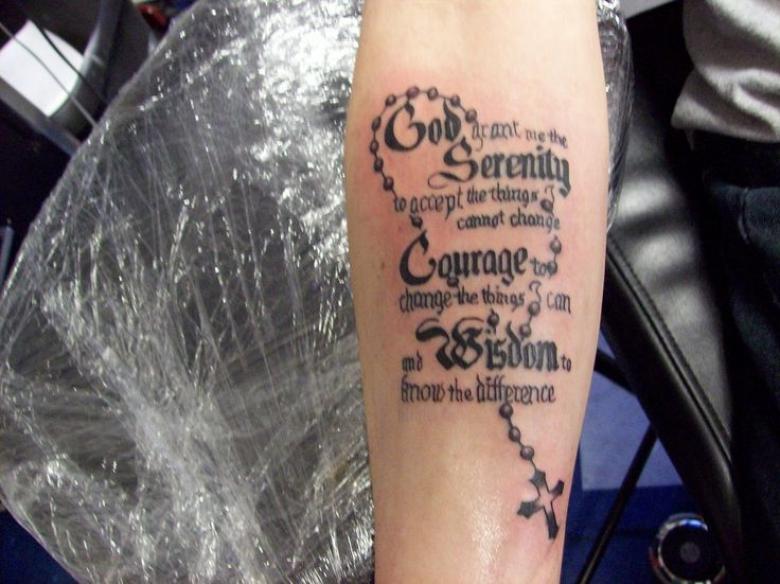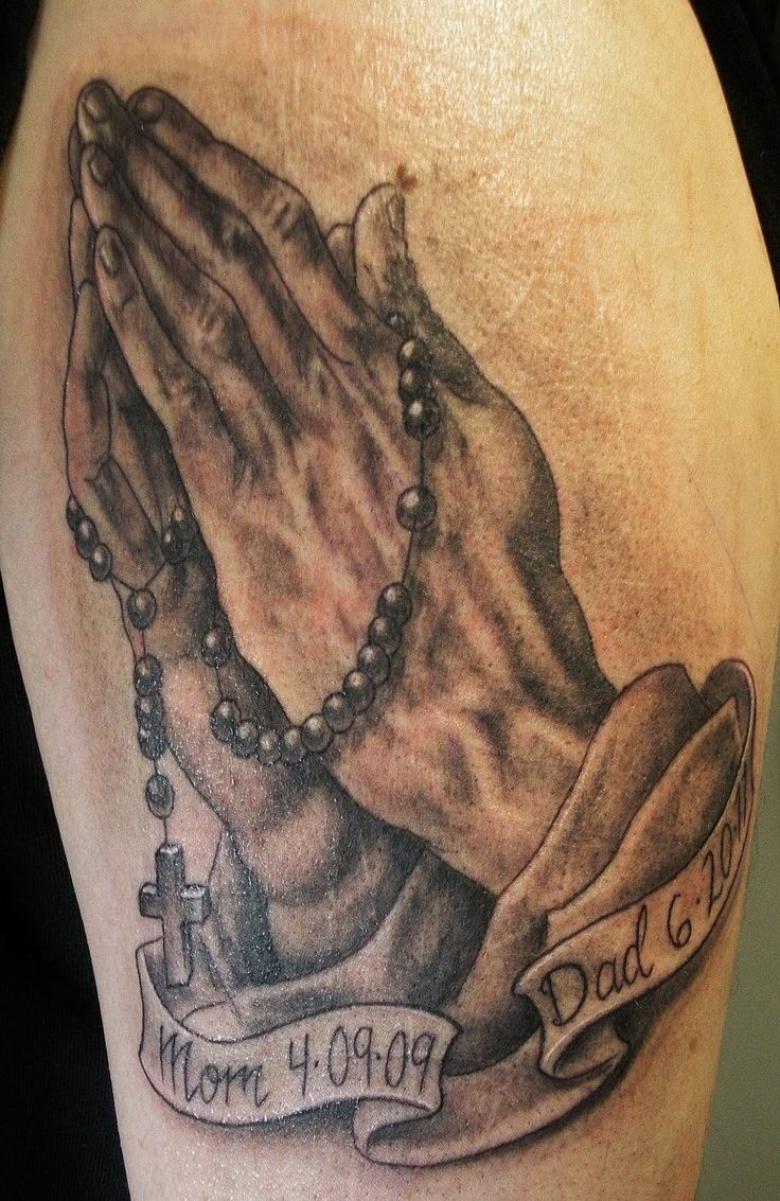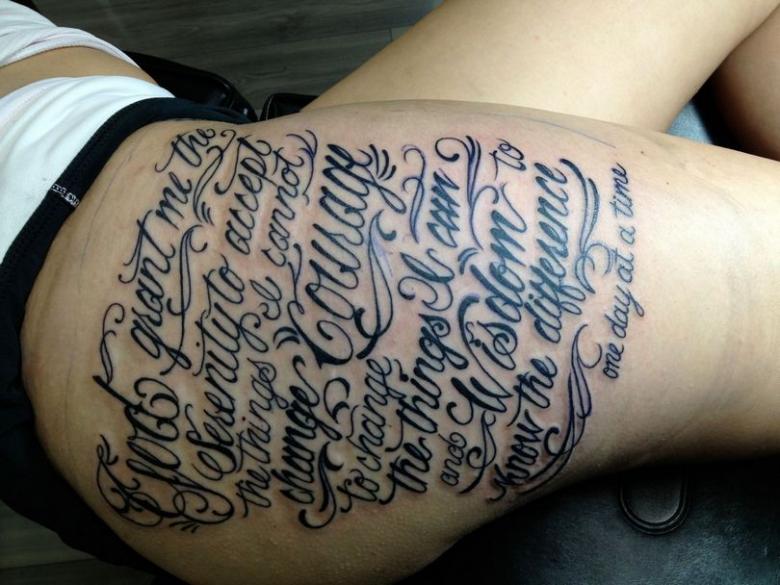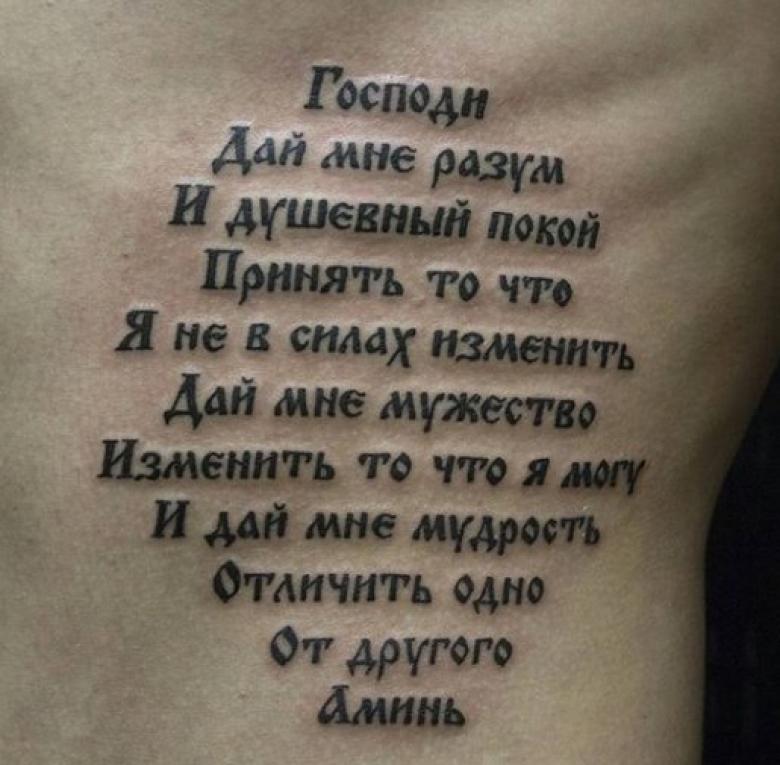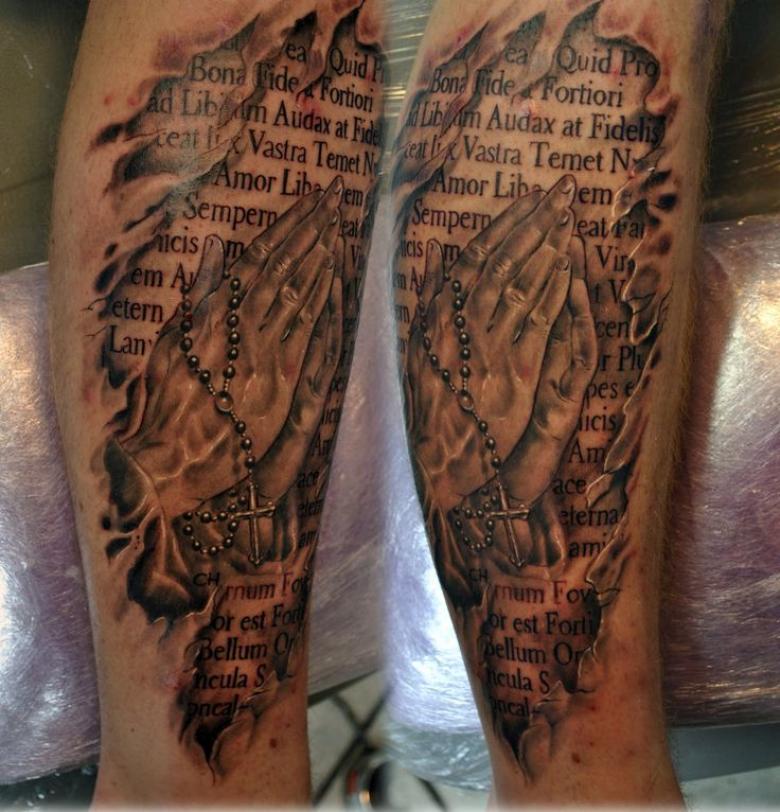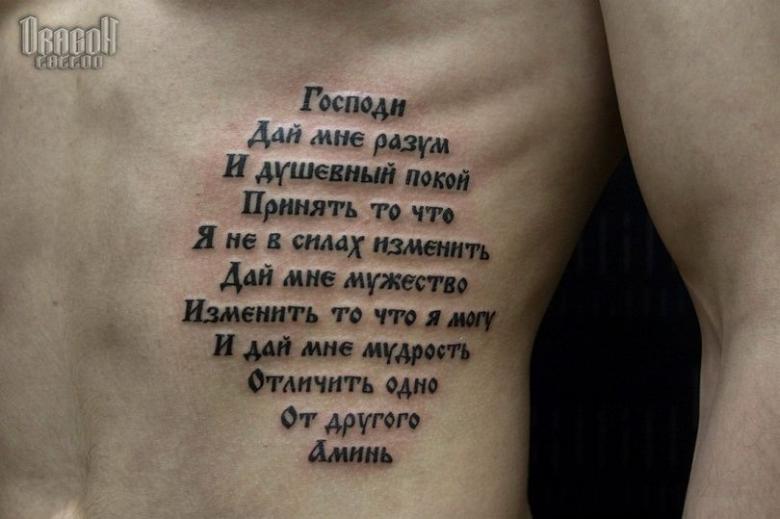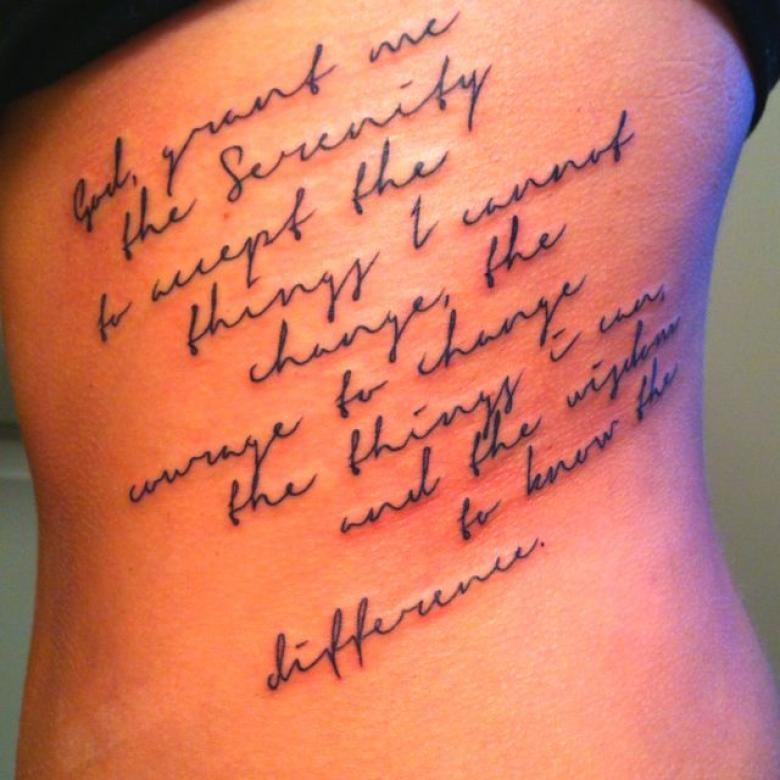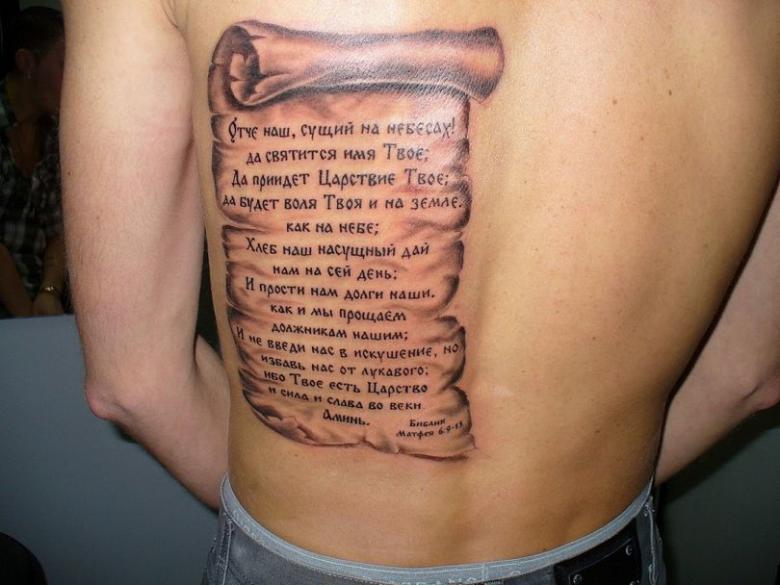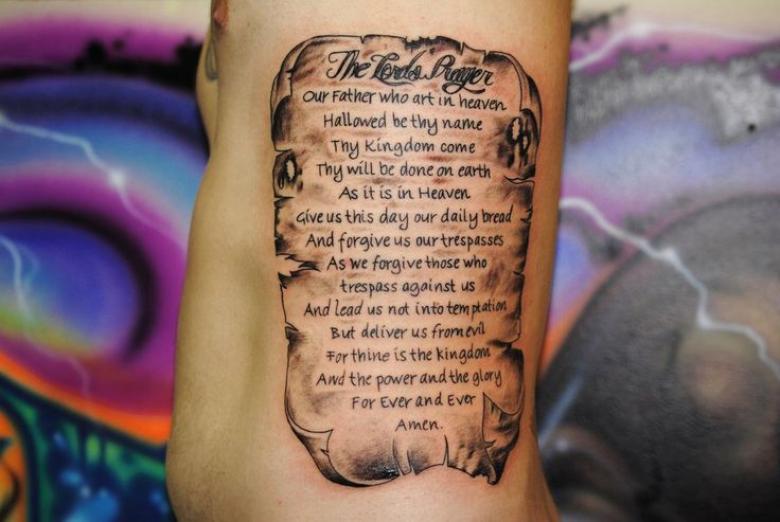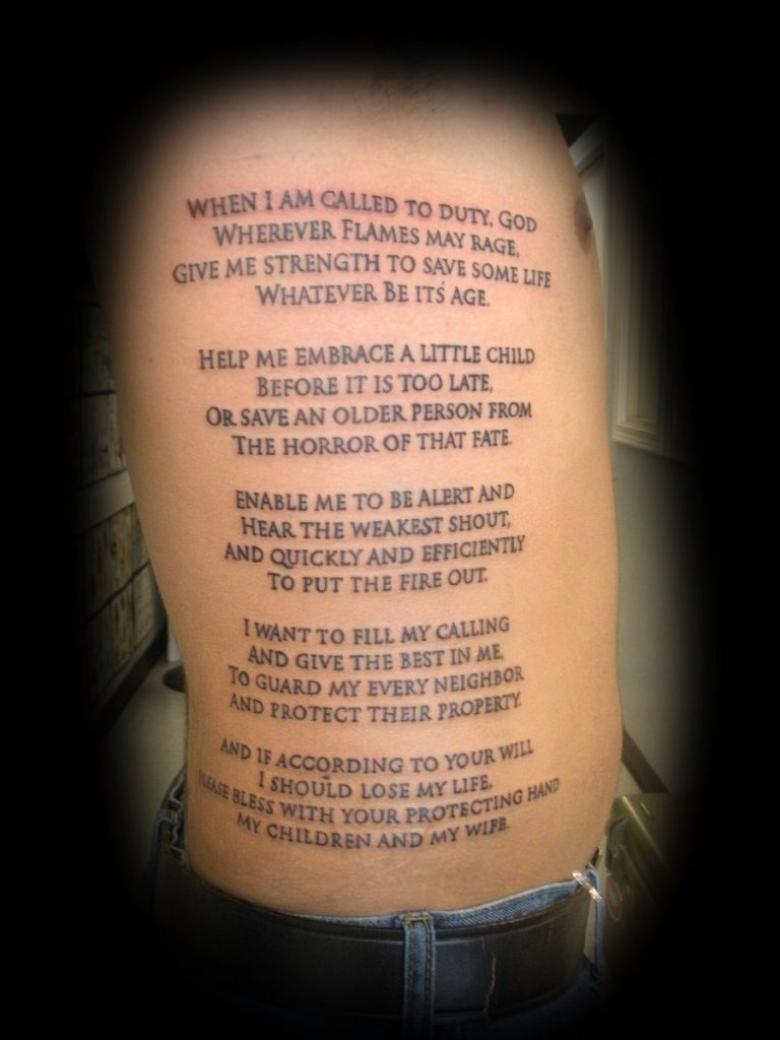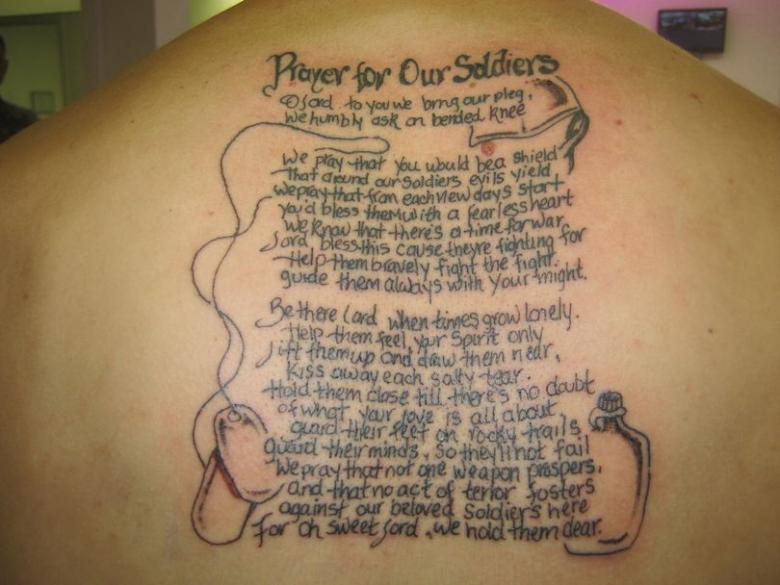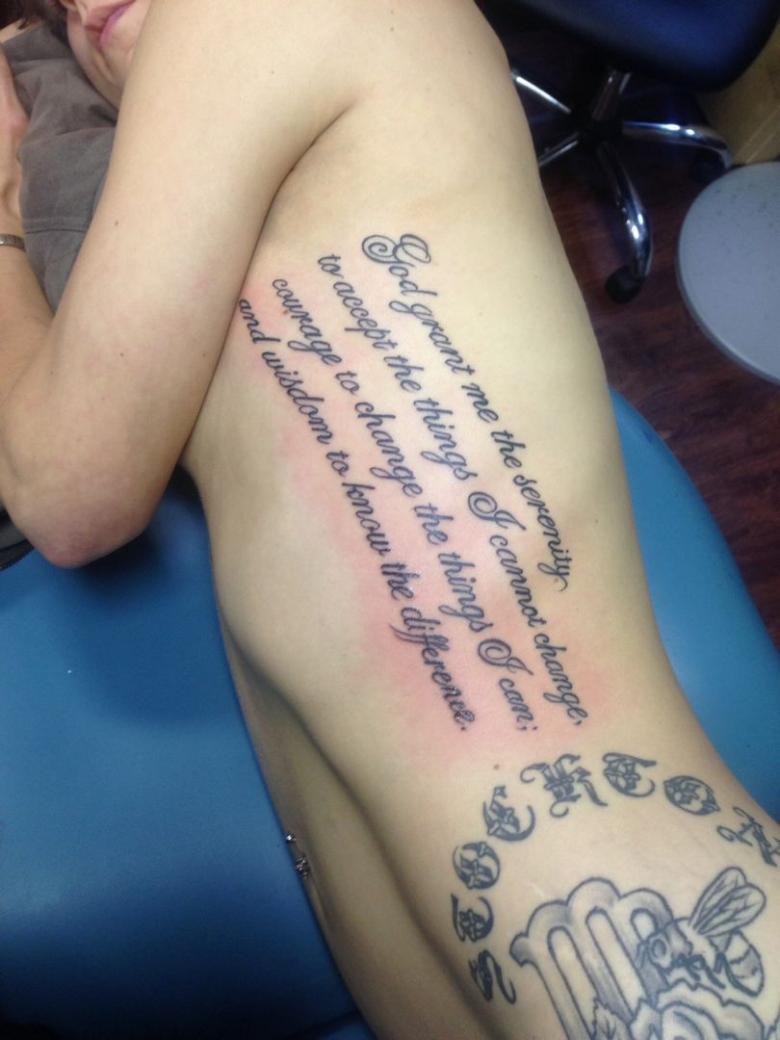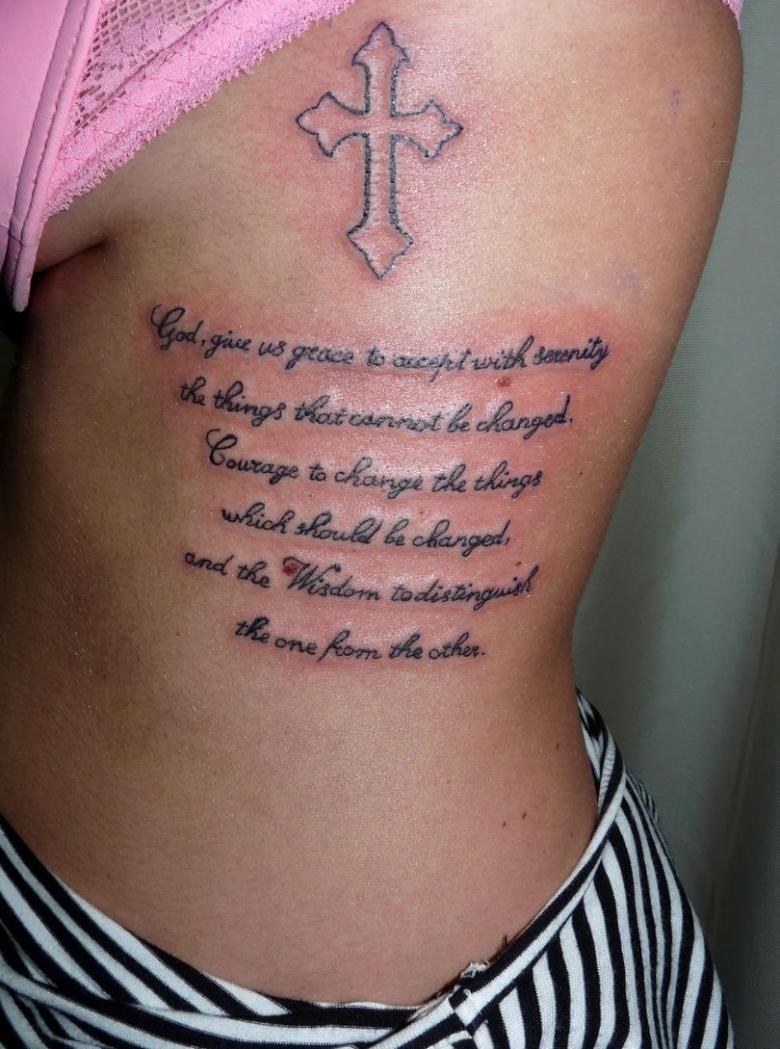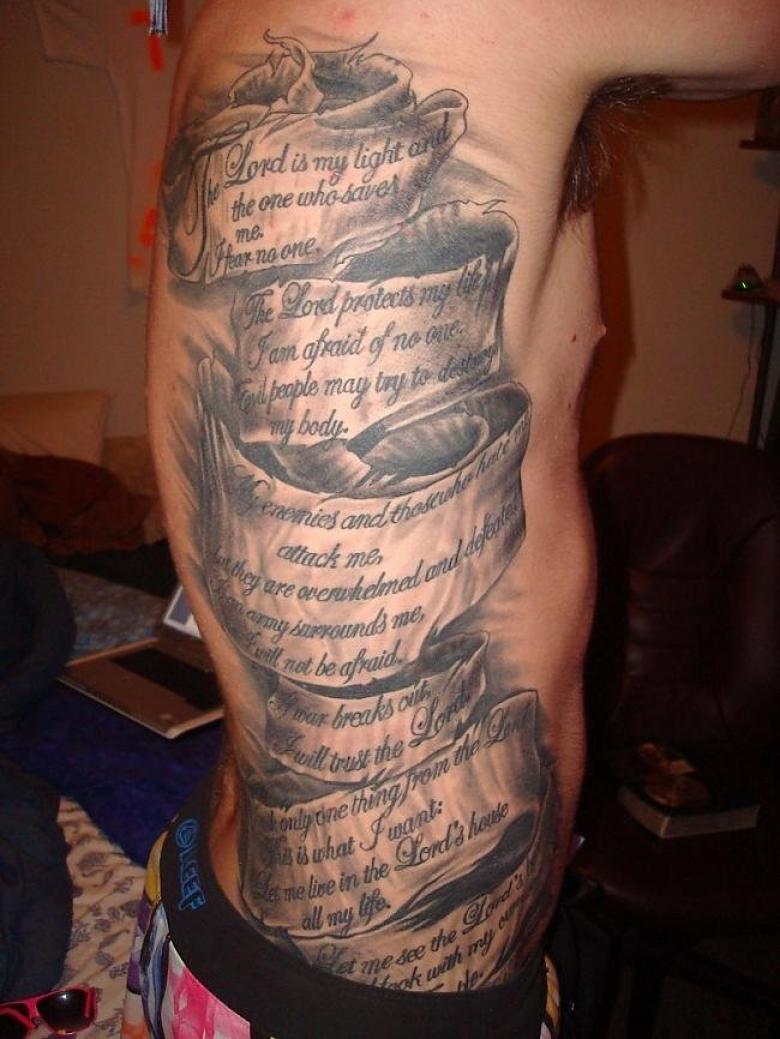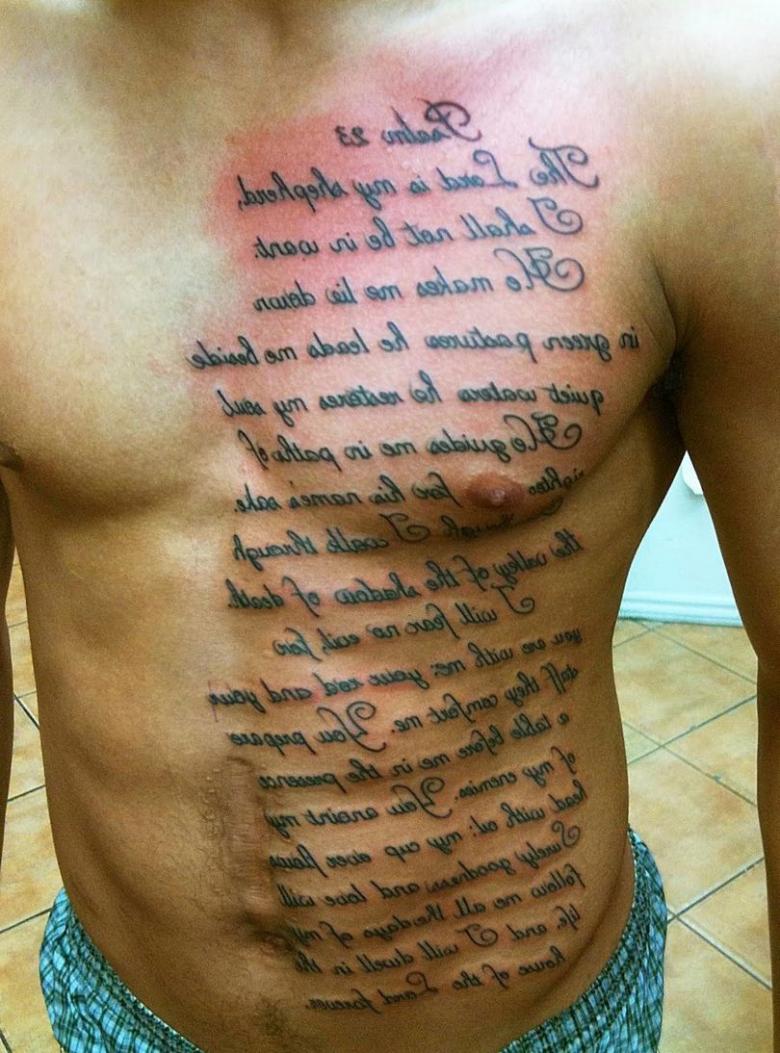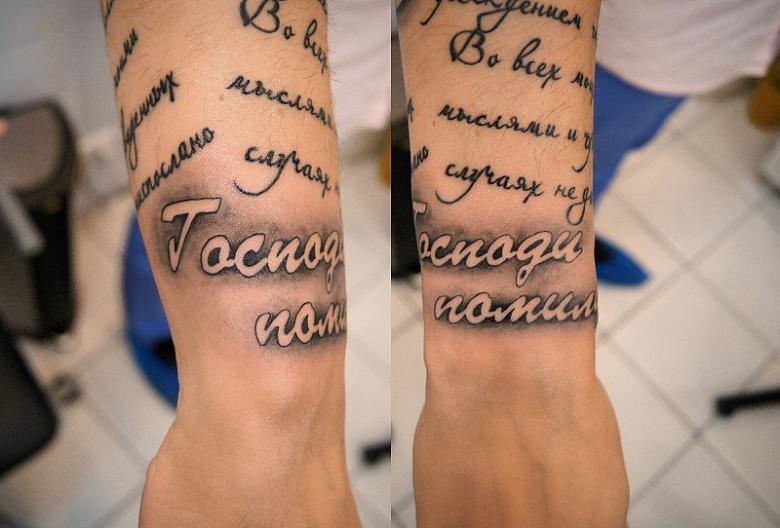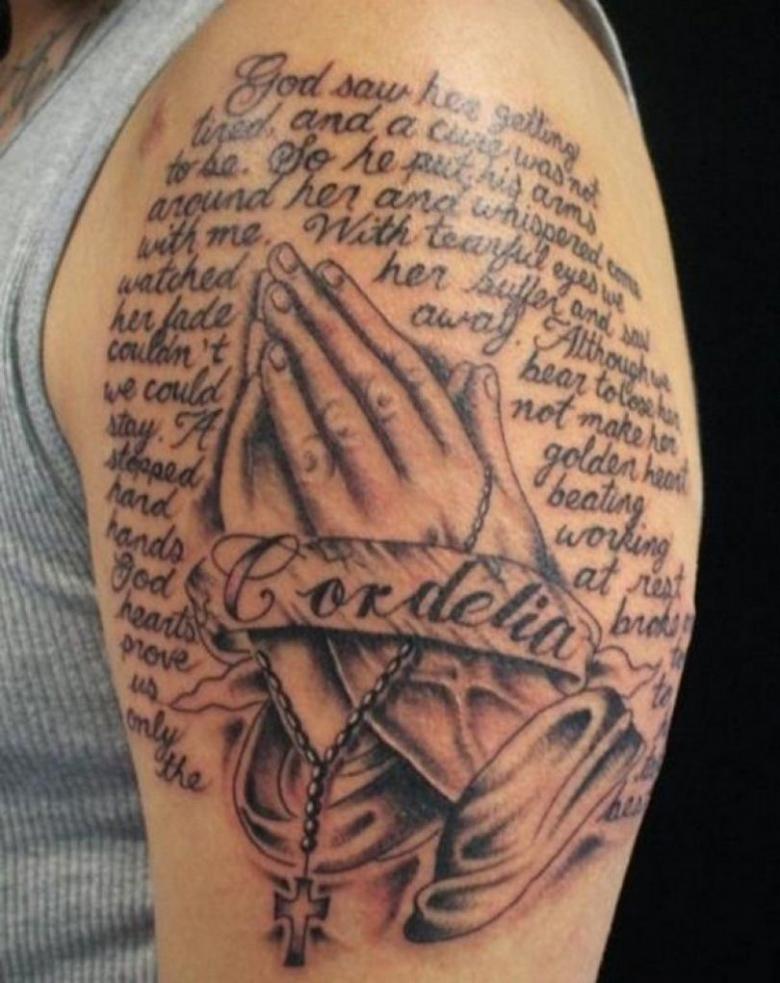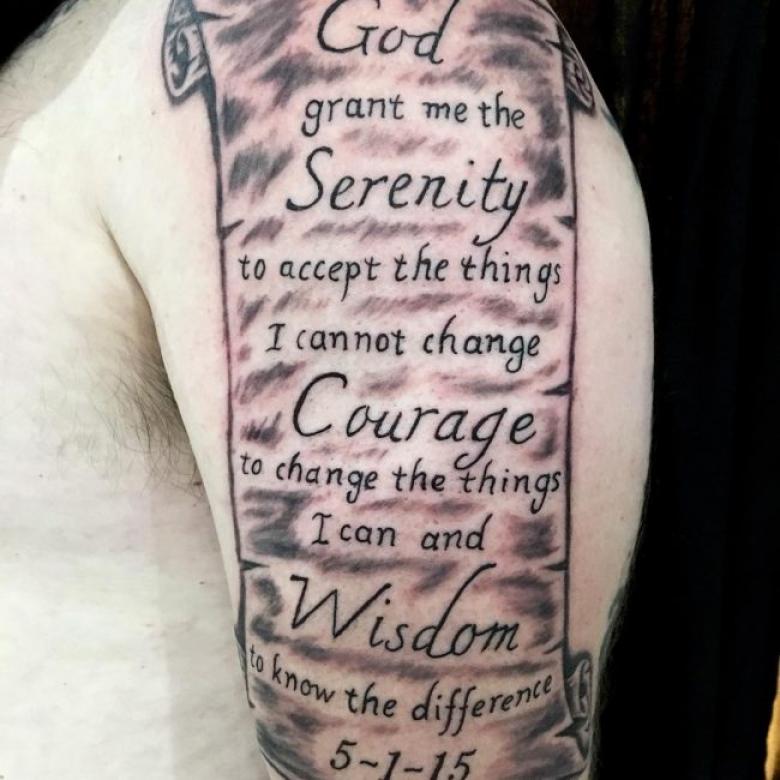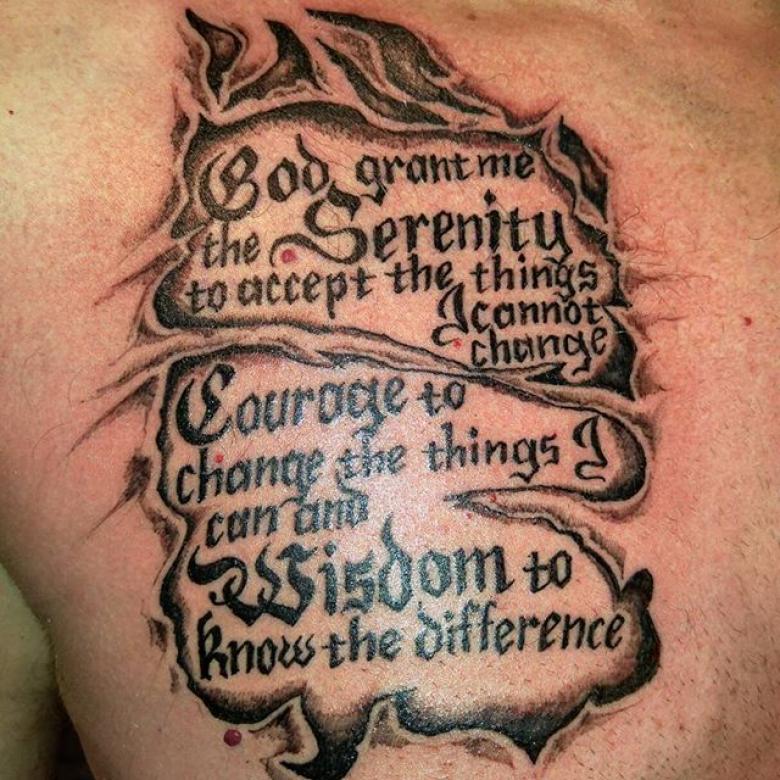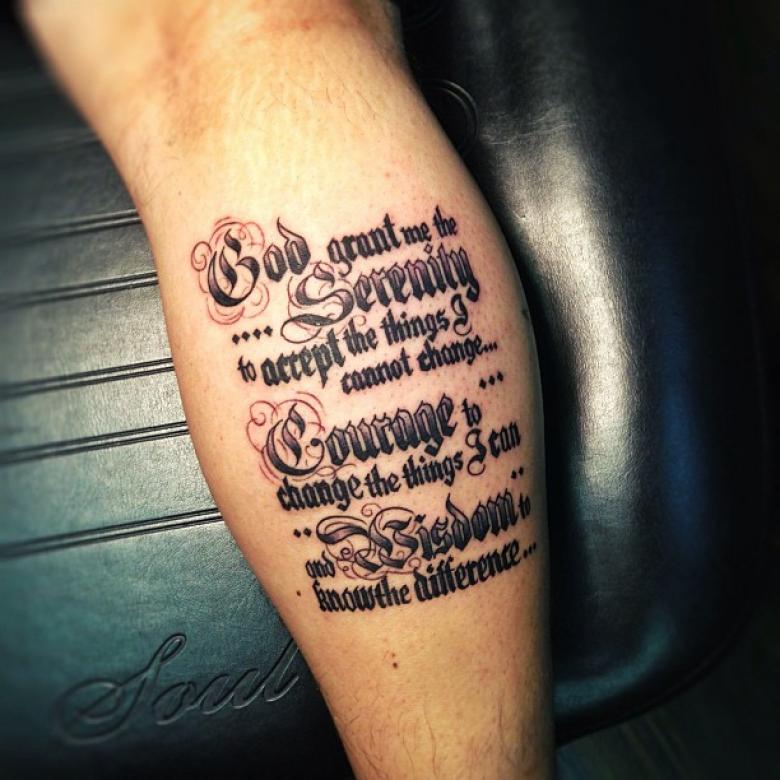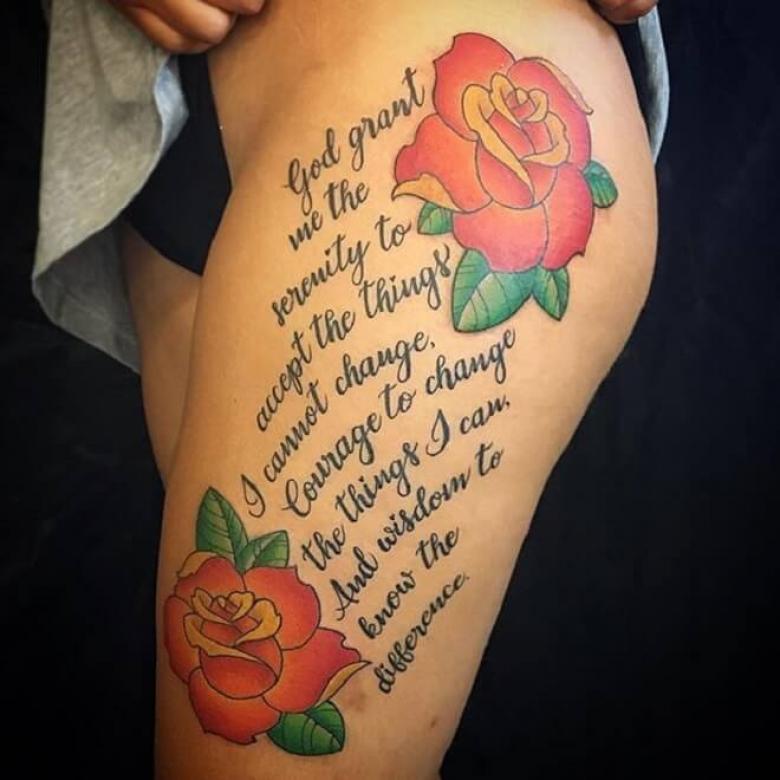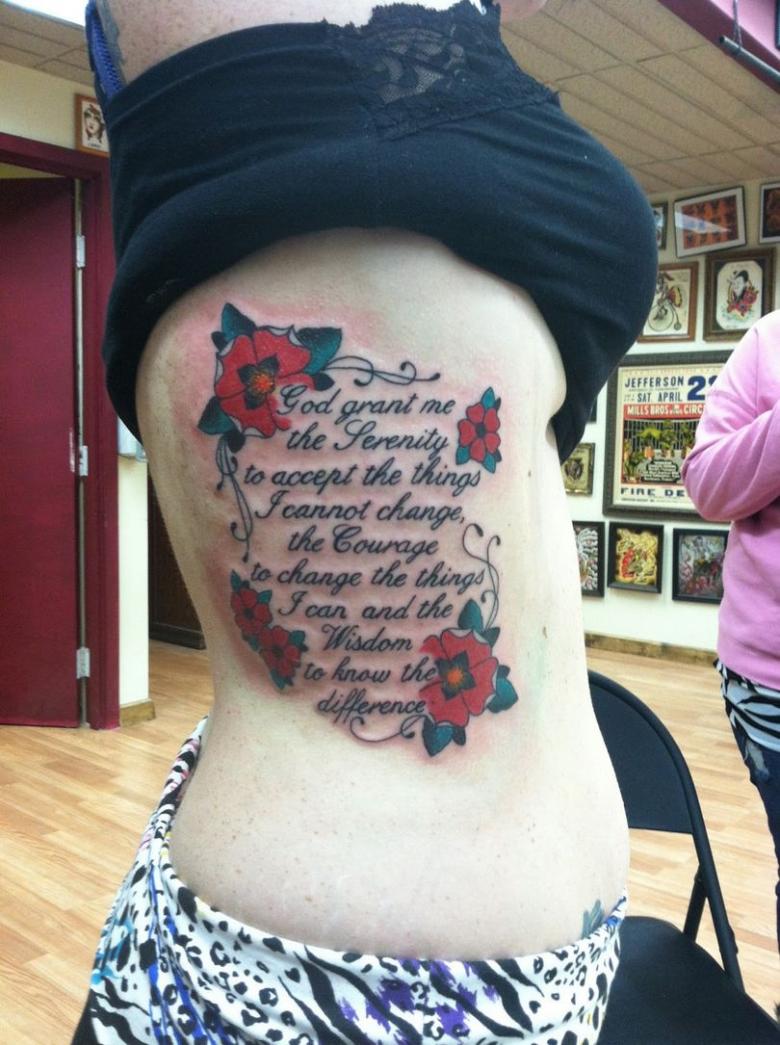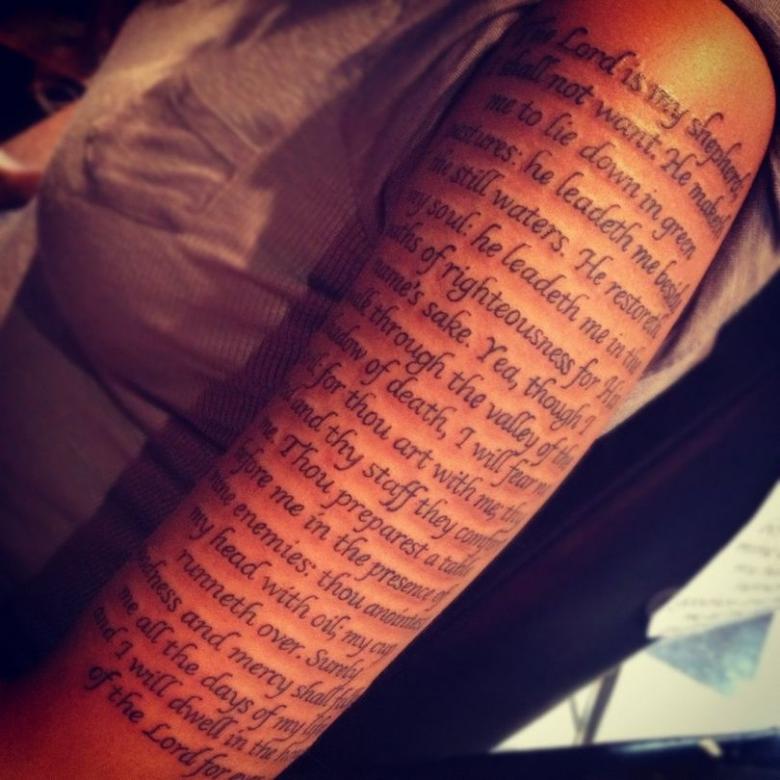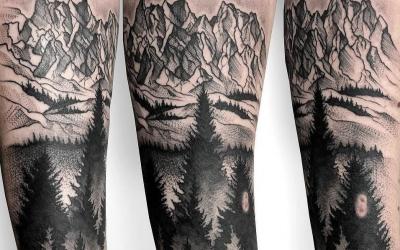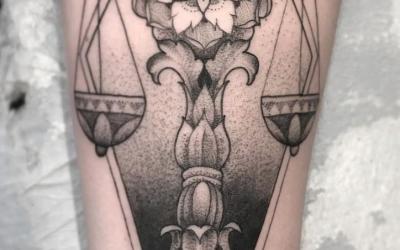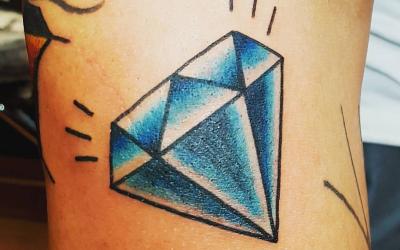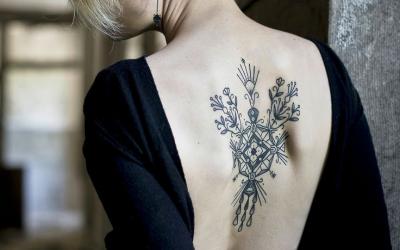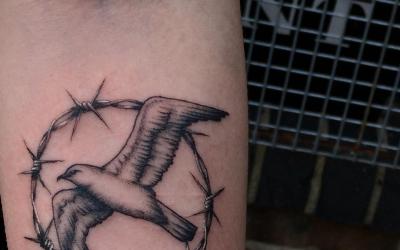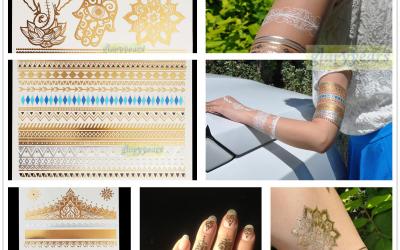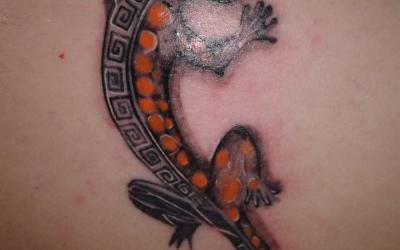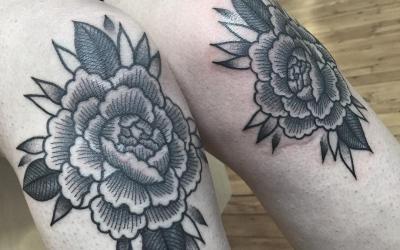Tattoo prayer - how to choose the text, the variety and popular places of application, photos of works
Texts of prayers and blessings, invocations to the gods, gratitude and dedications - all this can be embodied in the form of a tattoo prayer on the skin of many owners.

The meaning of a prayer tattoo is always very individual, you should not be quick to draw conclusions about a person's religious stance. It is worth to look closely at the different nuances, the parameters of the tattoo, the design of images - and much will become clear about the nature and life values.
Varieties of tattoo prayer
The popularity of sketches with prayers of all types is often quite high - you can find quotations from the Bible, from the Koran, Buddhist scriptures, Hindu Vedas. However, it is important to understand that church ministers of various denominations do not approve of this way of decorating the body. But people still want to achieve different goals in this way - to protect themselves from dark forces, to gain confidence in the support of the Creator.
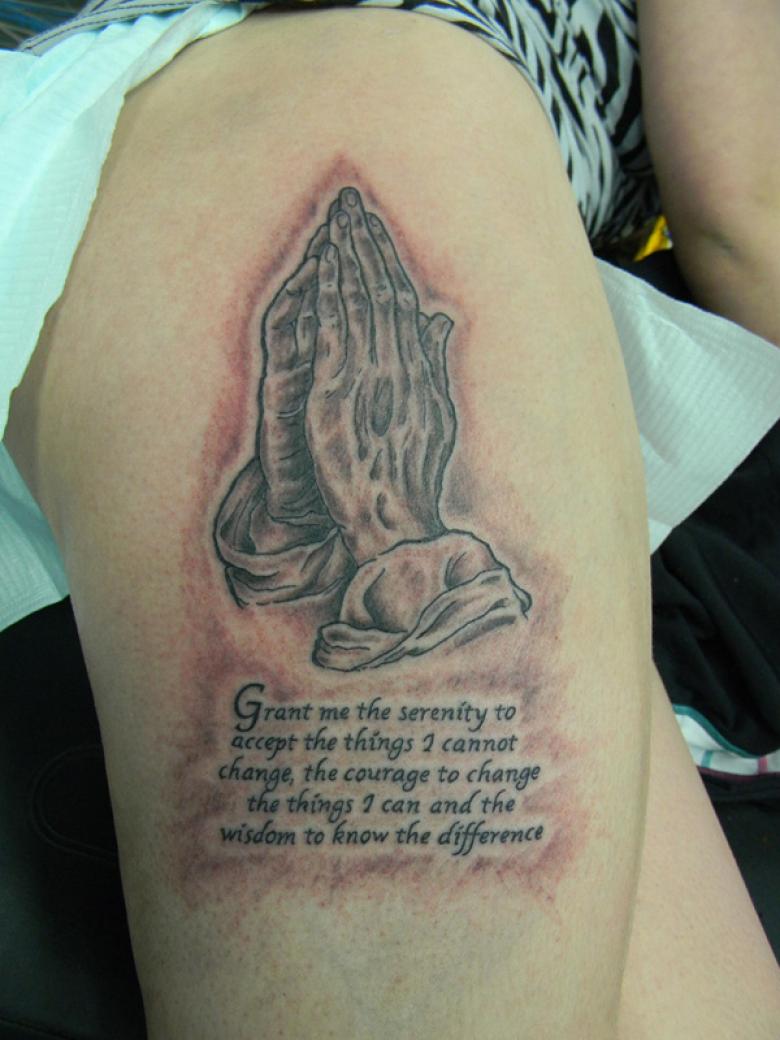
You can call it a kind of appeal to the patron, and it is a clear sign of a believer. Usually oral (personal or collective), prayer becomes a work of art, a way of self-presentation, a decoration of the body.

Perhaps the person at some point has reached a peak emotional state and insight, or perhaps despair. If this conversion once saved a life or gave hope, this is clearly the reason why the words are anchored under the skin.

Types of prayer tattoos:
- Praising patrons, Creator or spirits;
- Asking - for support, protection, guidance, and blessing;
- Gratitude - for the deeds of God, help and salvation.
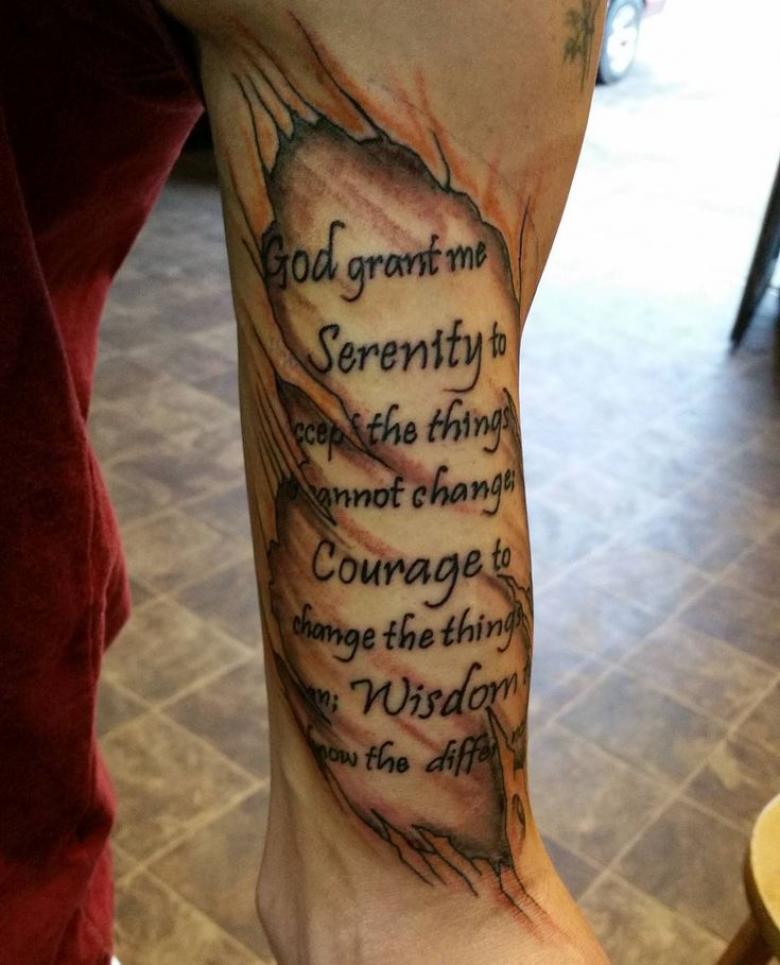
It is worth noting that in all religions reproduction of the image of God is not approved, but the inscription can be quite stuffed, so a tattoo of a prayer may well be a good analogy. With their help address directly to God, demonstrate an attitude towards the religious tradition, as well as a return and a reminder of some important situation.
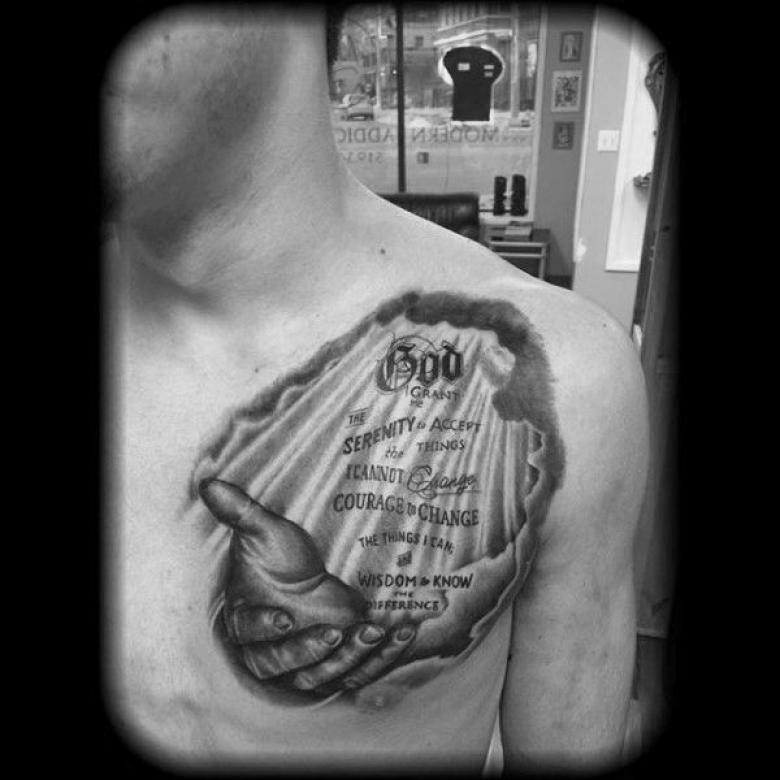
The specifics of different religious texts
Consider the leading religions of the world, which are often reflected in the form of a prayer tattoo.
- Christianity. Orthodox, Catholics, Protestants turn to God according to the text of scripture. Full quotations from various parts of the Bible, "Our Father", "Agnus Dei", and winged expressions are often applied.
- Islam. Muslims can inscribe namaz or dua in Arabic, the language of the Koran. The former is a great ritual; the latter is a simple invocation. To pray for Muslims means to uphold one of the five pillars of tradition. It is optimal to recite the prayer in a mosque, but a Muslim should perform the ritual where he or she is caught up in the moment of namaz. For many it is a symbol of Allah's protection.
- Judaism. Jews pray by the hour, as it was prescribed even during the Babylonian captivity. Often the Hebrew text is accompanied by numerical values and Kabbalah symbols.
- Buddhism. By and large, there are no prayers in this tradition, but there are mantras and meditative texts. They require accurate pronunciation in the original language - Tibetan, Sanskrit, Chinese, Japanese.
- Hinduism. Here you can find quotations from the Vedas, images of Hindu gods and asuras, the Om sign as a symbol of connection with the source of life.
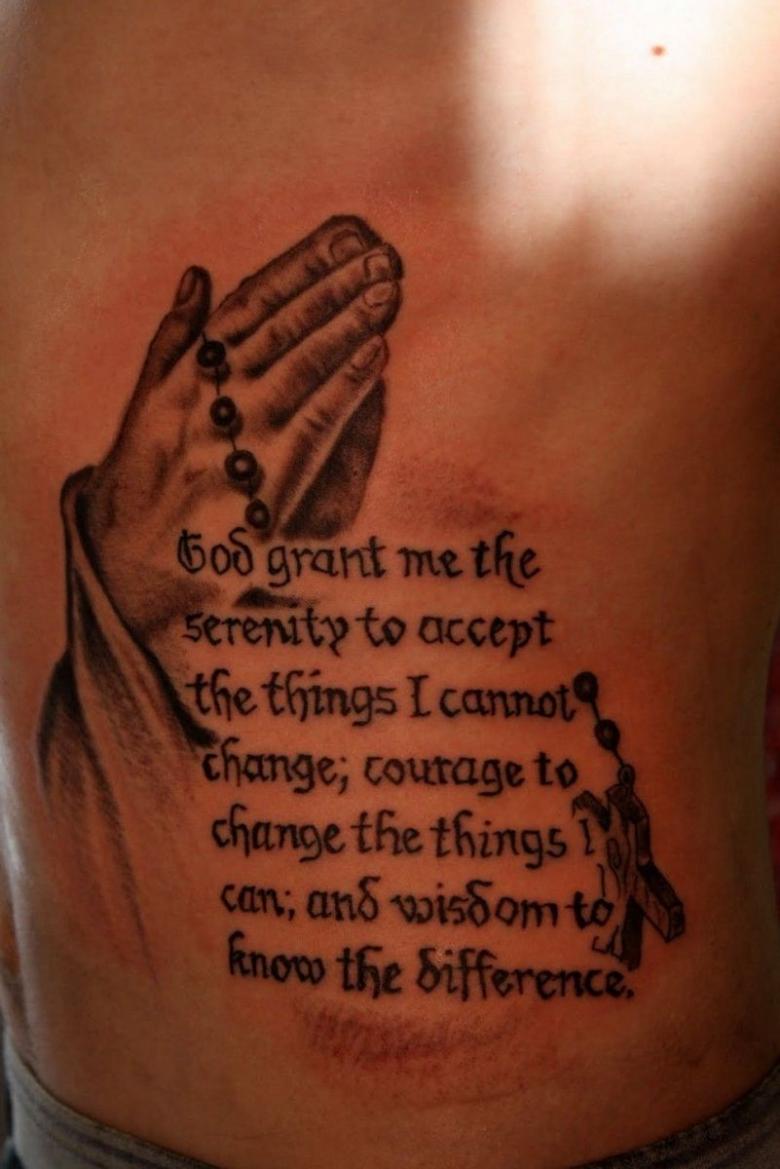
The question is what the variations of such drawings might be. What can be added to the translations or the original? If the prayer tattoo does not fit on the body area, it is replaced by numerical and alphabetic designations - a reference to the holy books and a particular section. There can also be additions in the form of crosses, the crescent moon, hands in a prayer gesture and other attributes of religion. But there are usually no superfluous details; every detail counts.
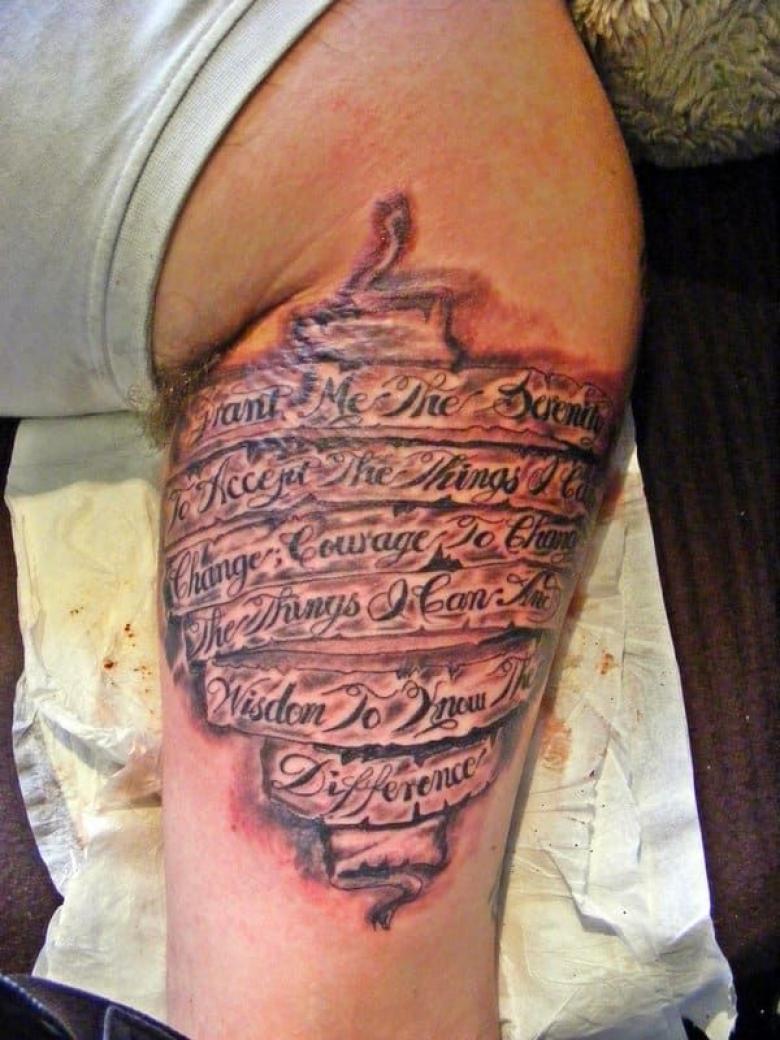
Perhaps the most popular image in Christianity is that of a painting by Albrecht Dürer with folded arms and a cross on a chain. To it may be added rosary beads, doves, other details, and biblical lines. But mostly these variants of the prayer tattoo are common in the West, not in the Russian Orthodox tradition.

There are other religions that are less common - for example, paganism, Zoroastrianism, Sikhism. Not all traditions have their own holy books, as well as classic versions of prayers, but as analogues, runes, pagan symbols, images of gods can be stuffed.
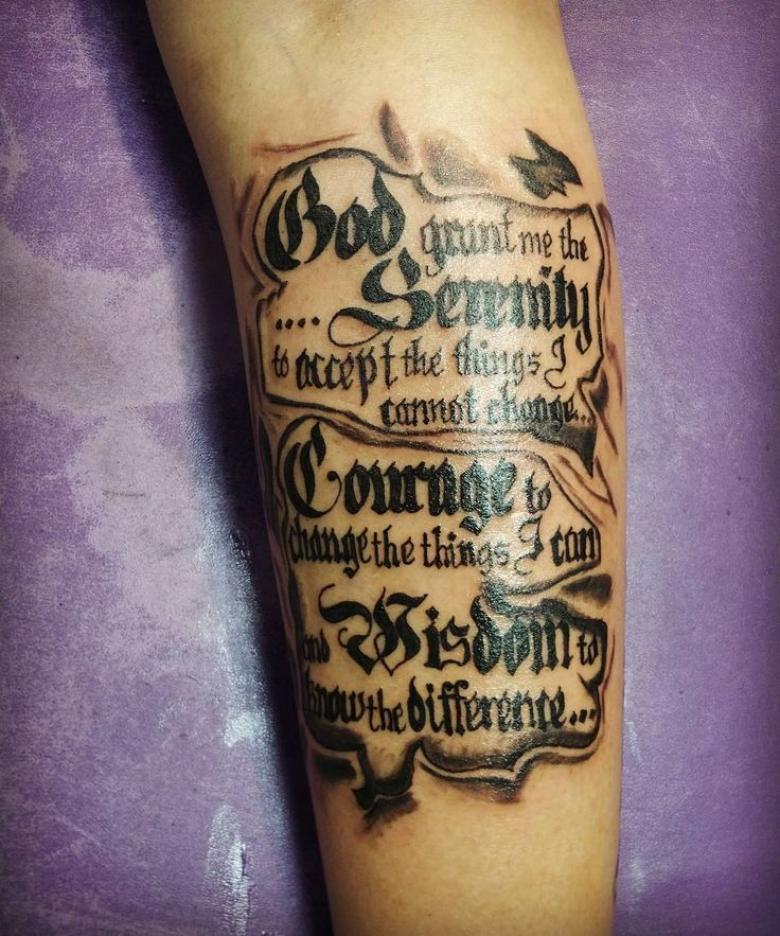
Character of the owner of the tattoo prayer
Apparently, we are faced with a man with a difficult experience and a serious outlook on life. But let's look at it from a different angle.
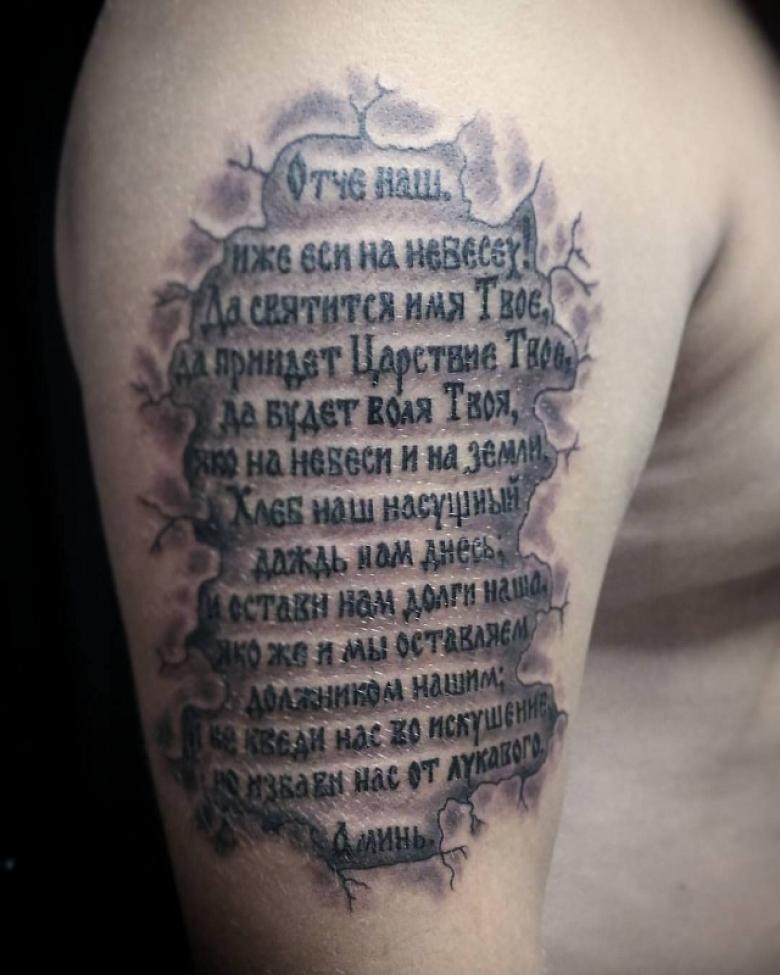
Historically, all sorts of "domes" and tattoos of prayer were given to prisoners-they couldn't be whipped if they had religious symbols on their backs. Now, it's everyone's free choice. And if he decided to put a tattoo of a prayer, it means there was a reason of a personal nature - a vow, salvation and help from the gods, the hope for protection in terrible situations.
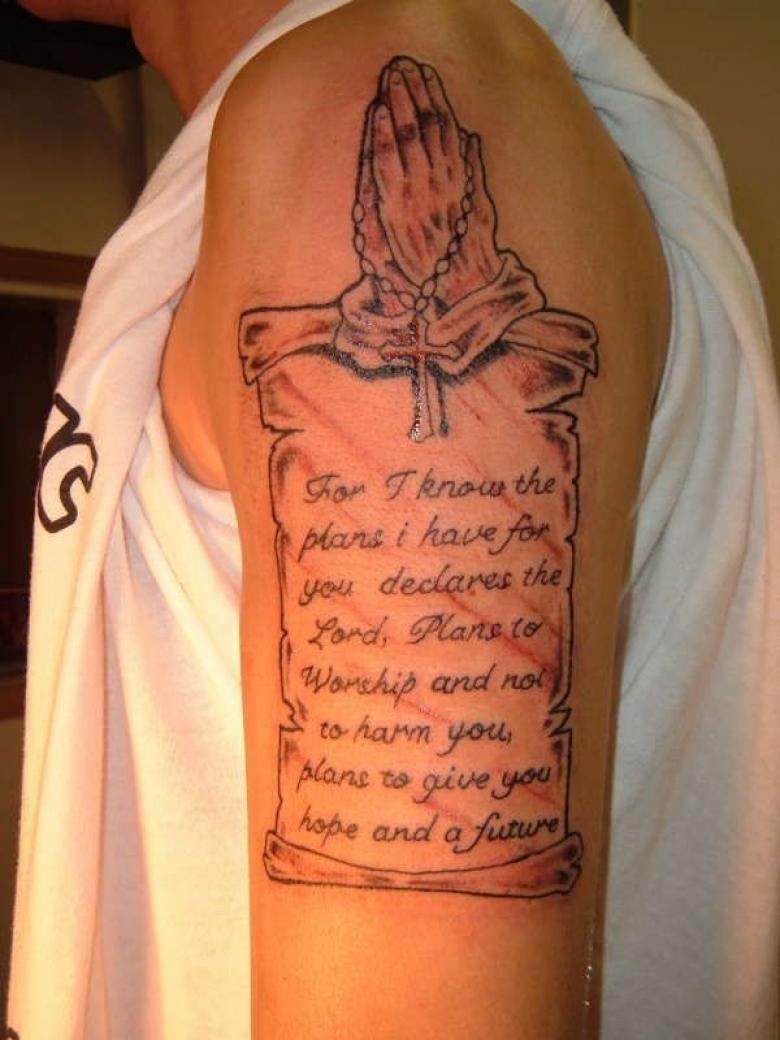
It is not worth commenting or somehow discussing this type of tattoo - you can seriously offend people. They themselves can tell about the meaning of the drawing and the reasons for its appearance. Not necessarily in front of us a religious fanatic, just a very serious and deeply religious person. It is unlikely that such things are tattooed just for the mood - it does not bring good luck in life.
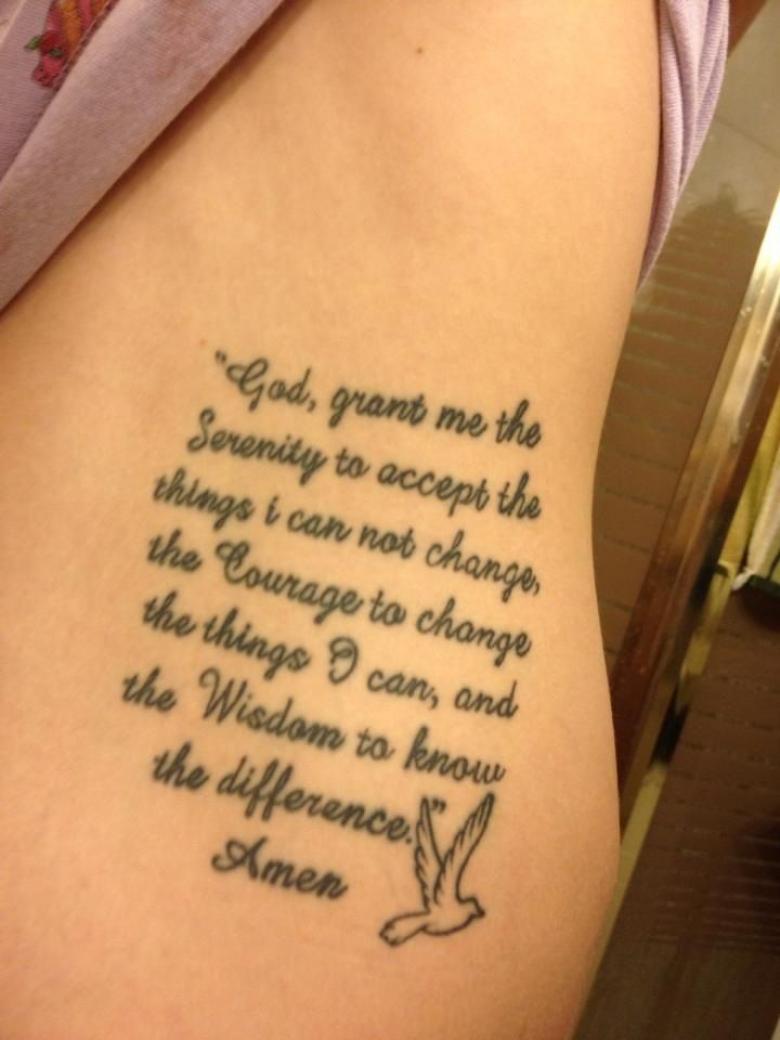
For the bearer of a tattoo prayer is a way of unity with God, sacred texts remind of the main thing and make you think about observing the rules of tradition and promises made. Especially if the prayer tattoo is low-key and not flashy, as a rule, it is not exposed. This is a way of saying "thank you" to the Creator.
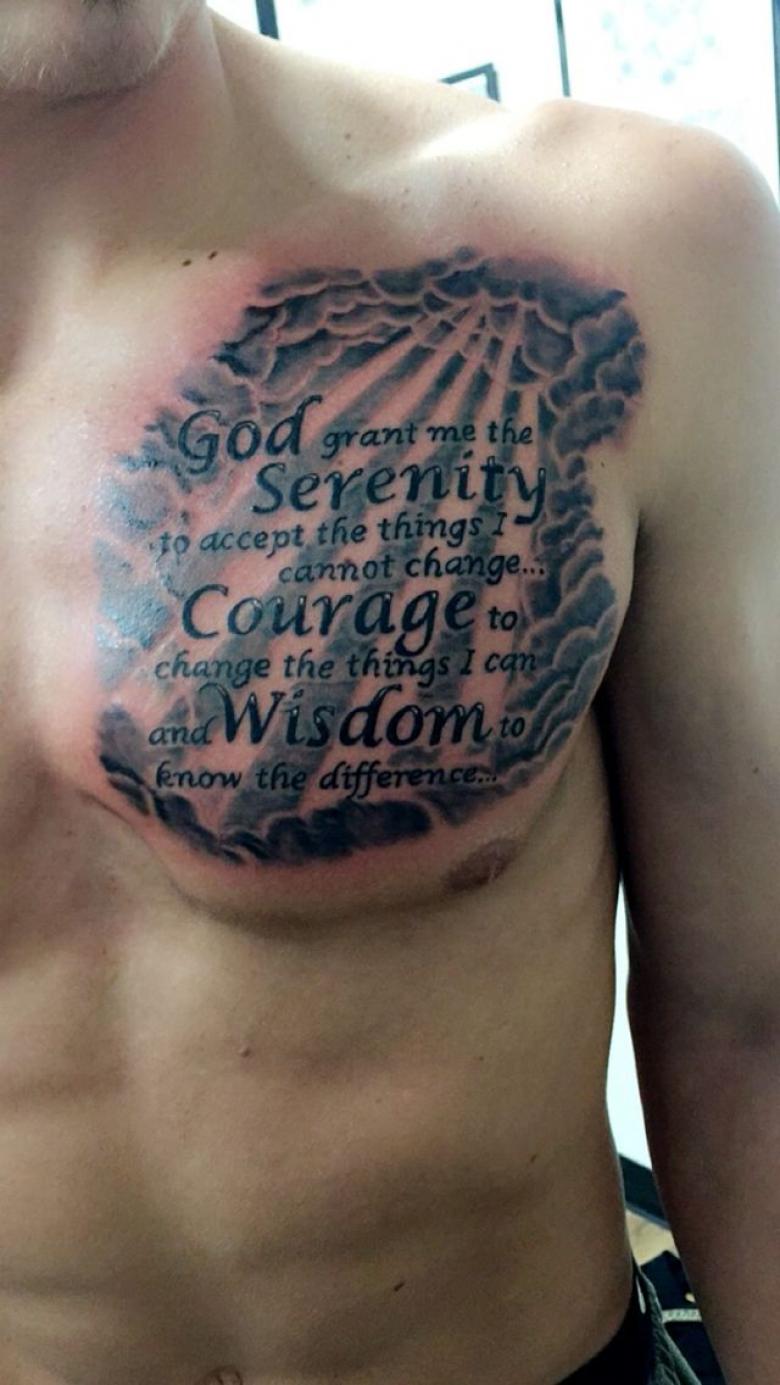
To impose such tattoos is preferably above the waist. For the text to be well read and not confused, it is made on the back, shoulder blade, along the forearm.
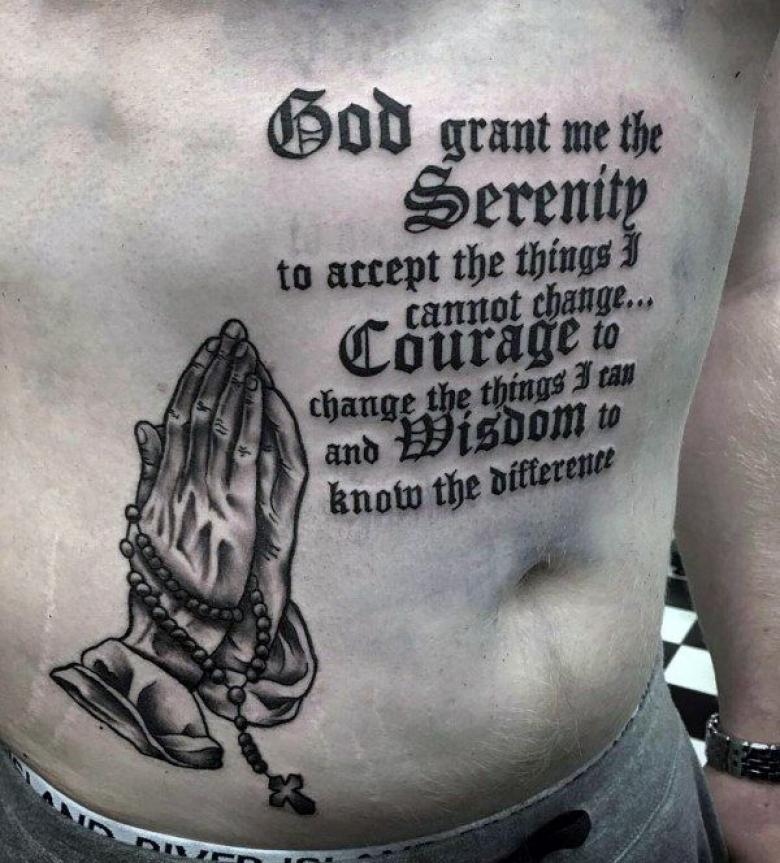
Celebrities also often impale themselves with religious images. For example, Angelina Jolie is known for her Buddhist mantras on her back. And Justin Bieber has a tattoo in Hebrew, which means the name of Jesus.

